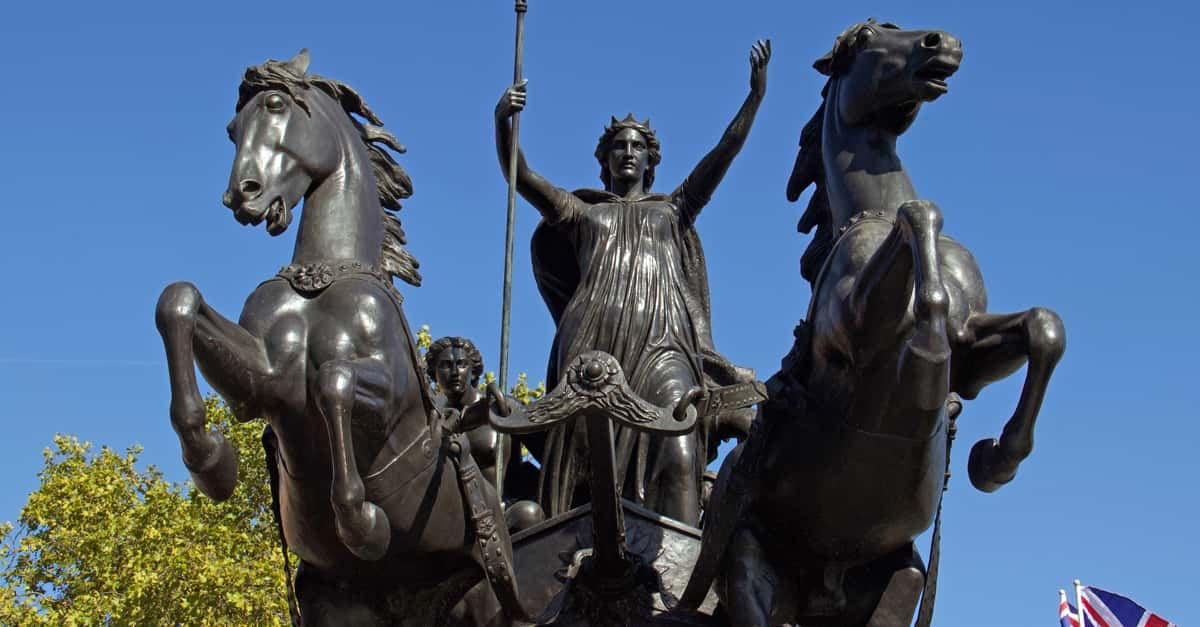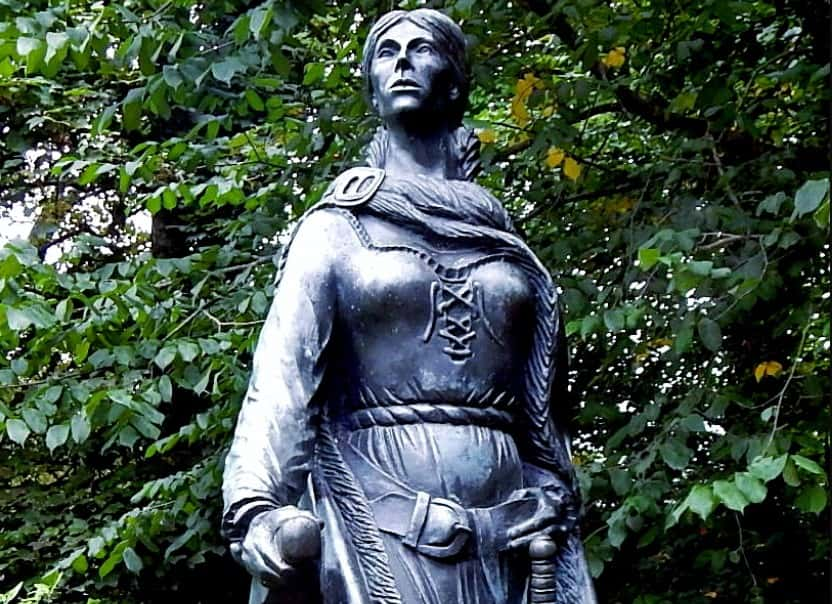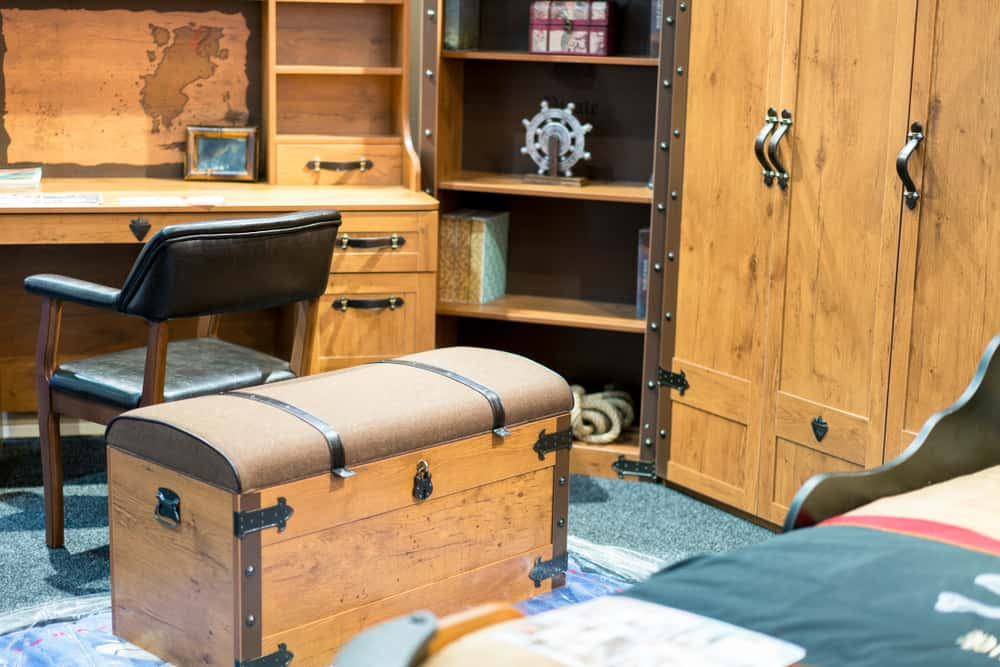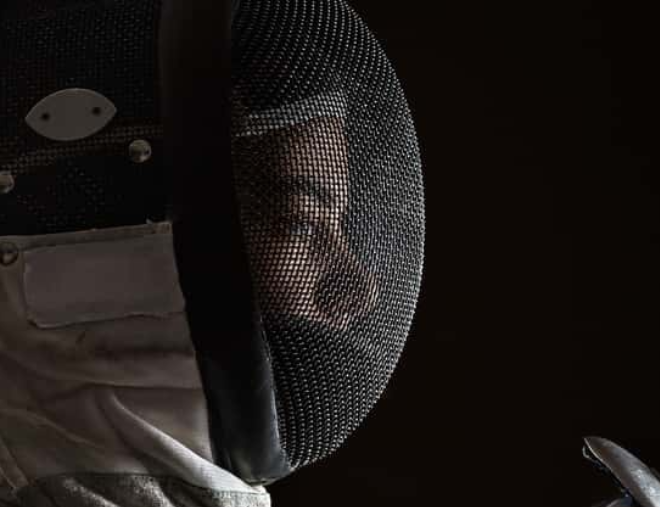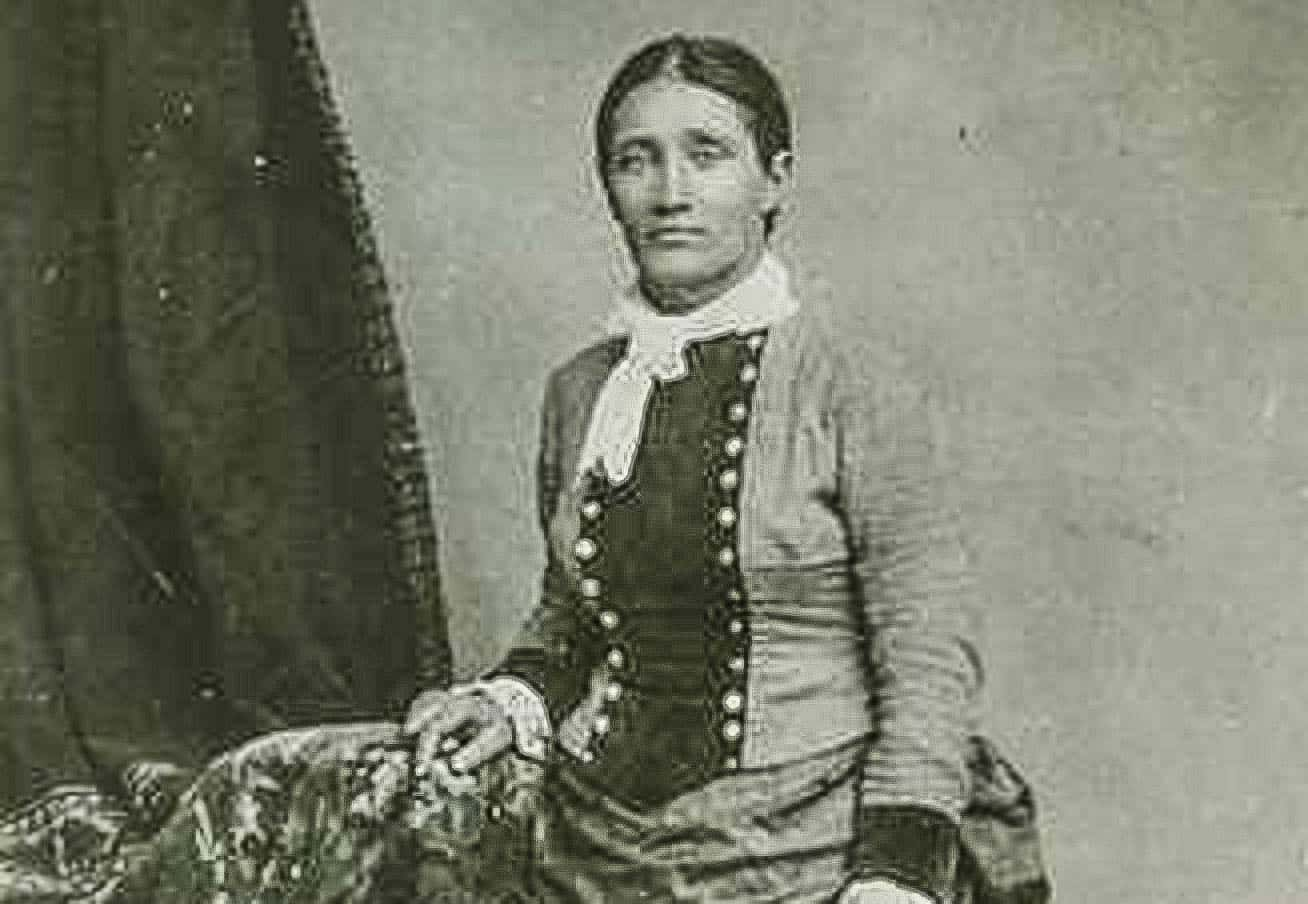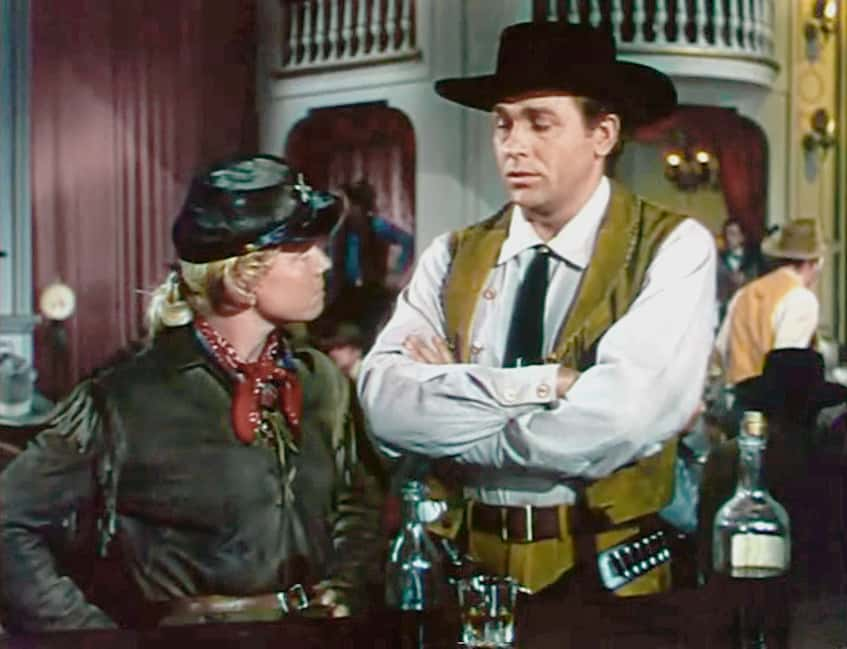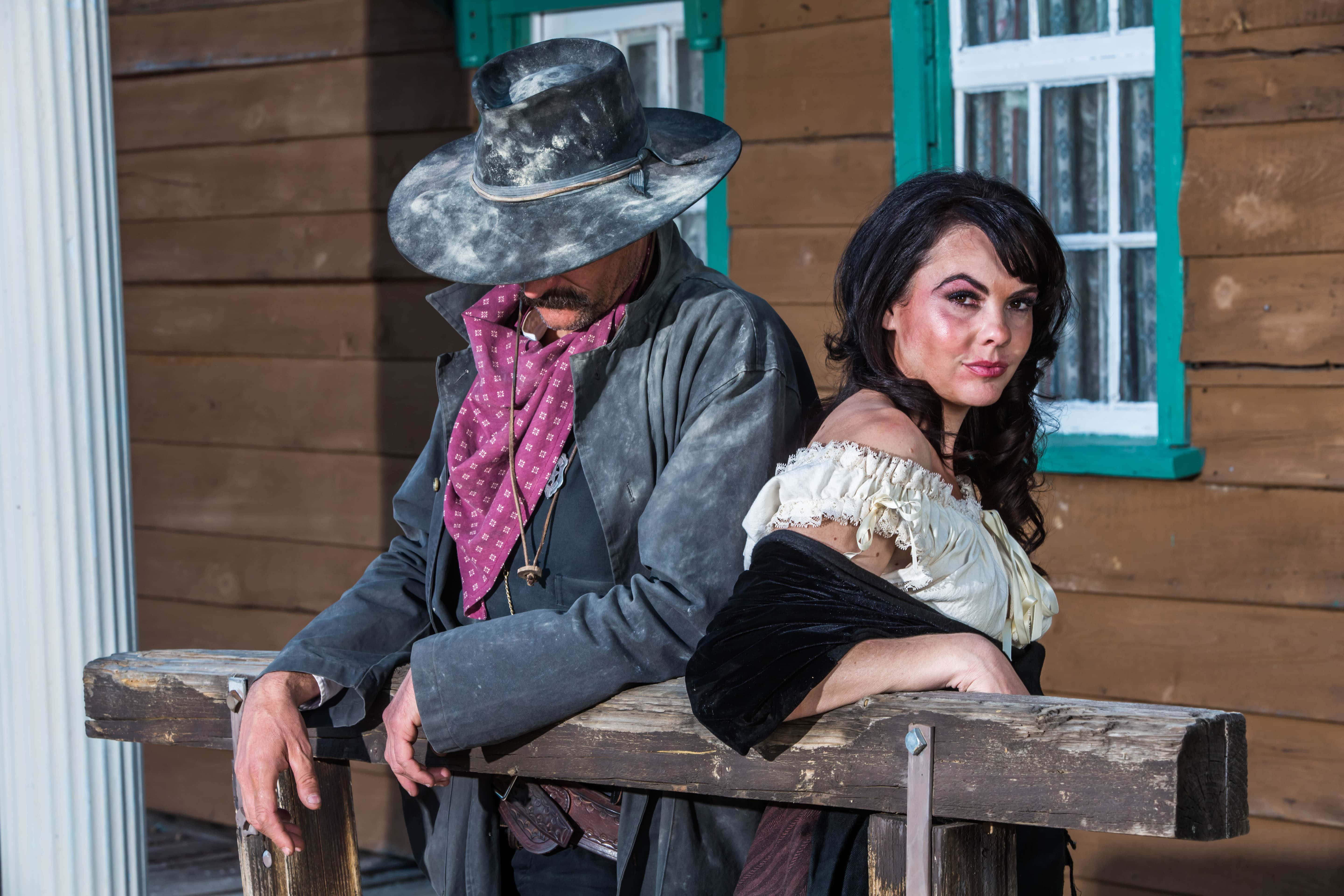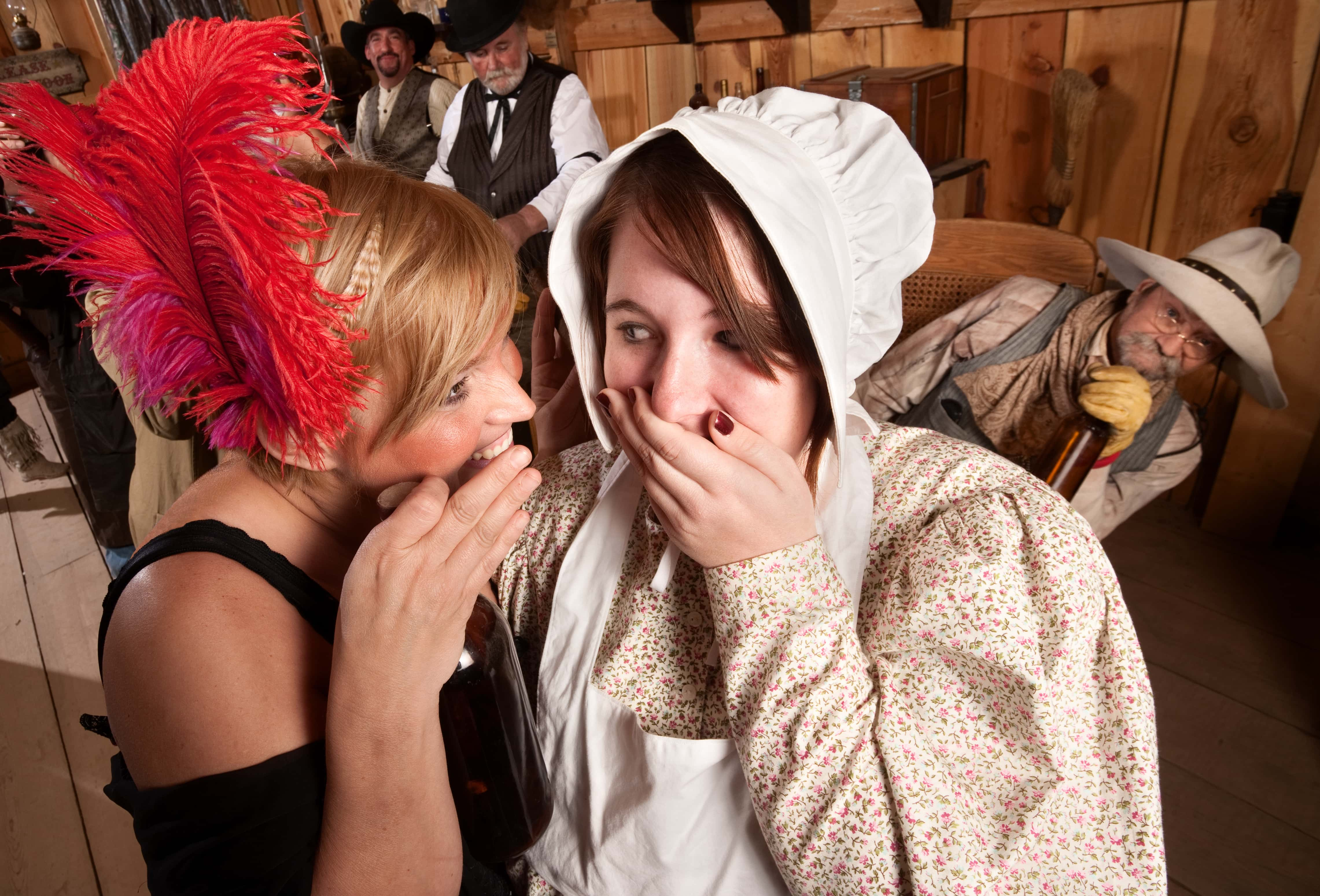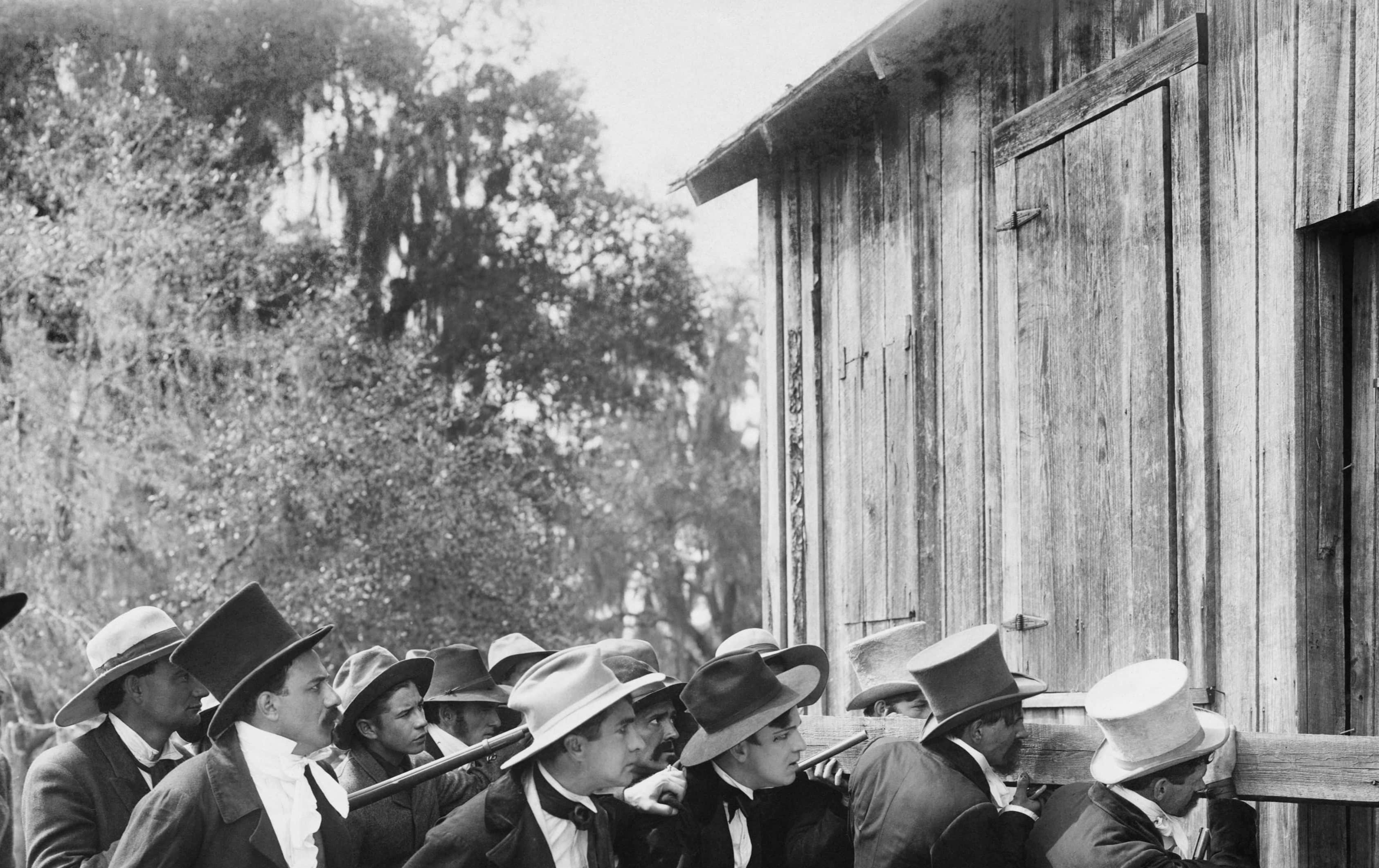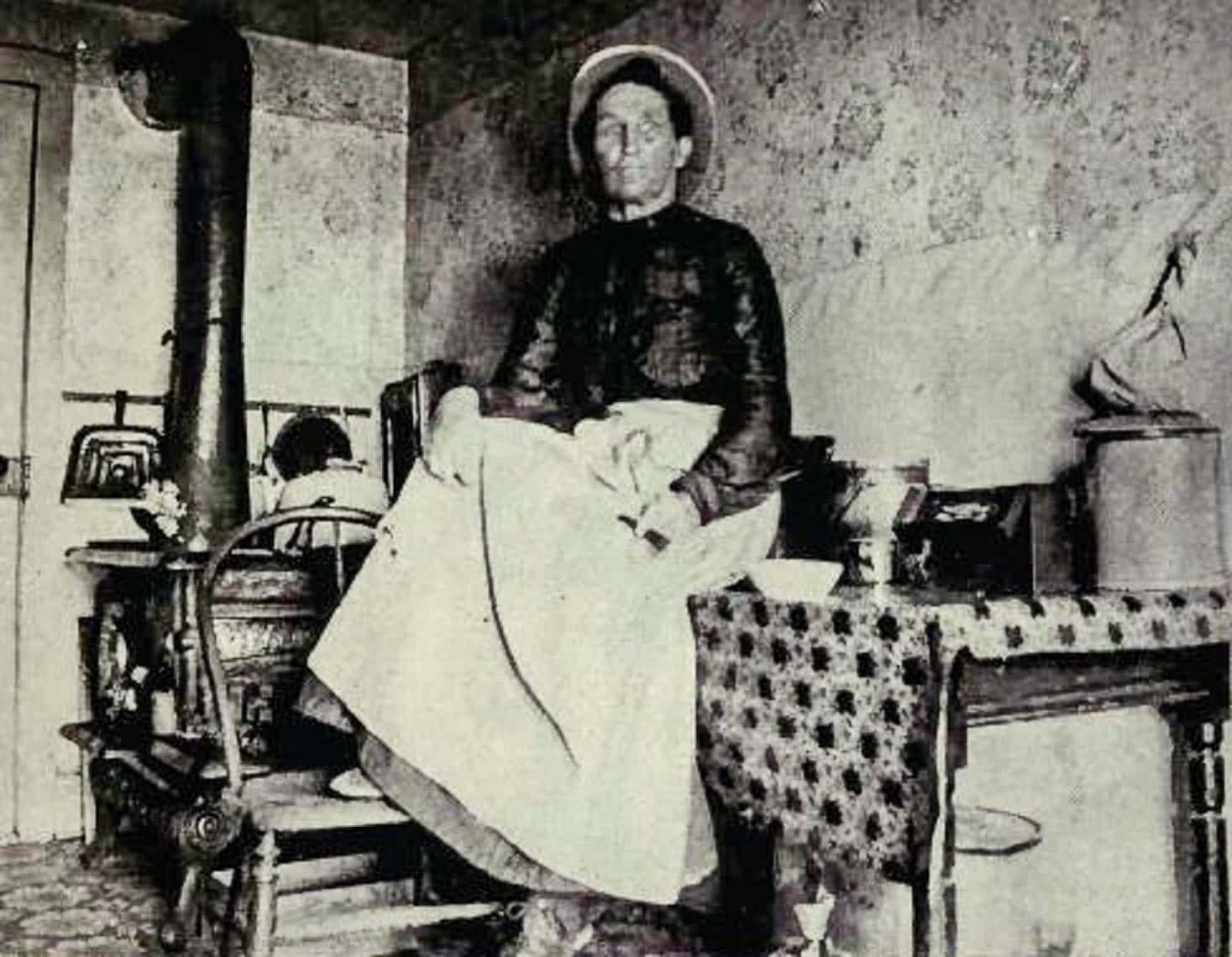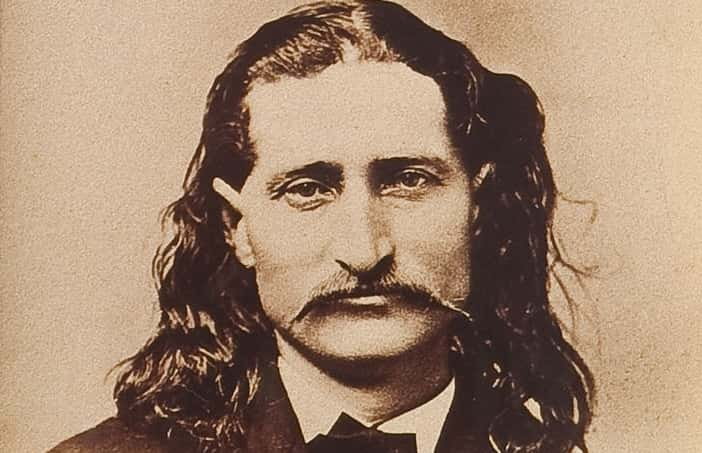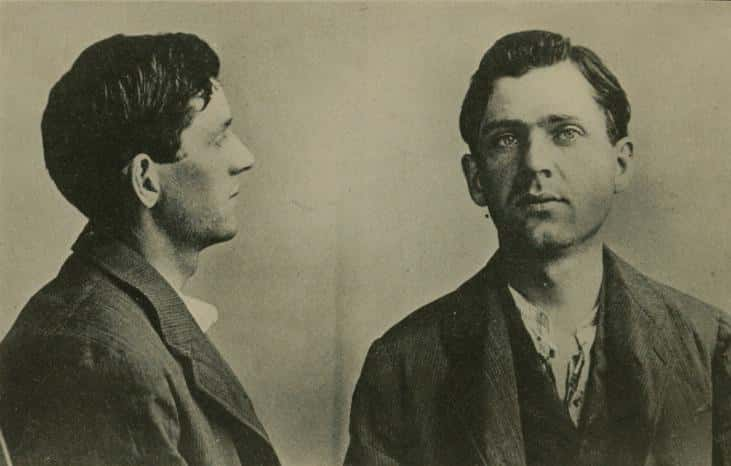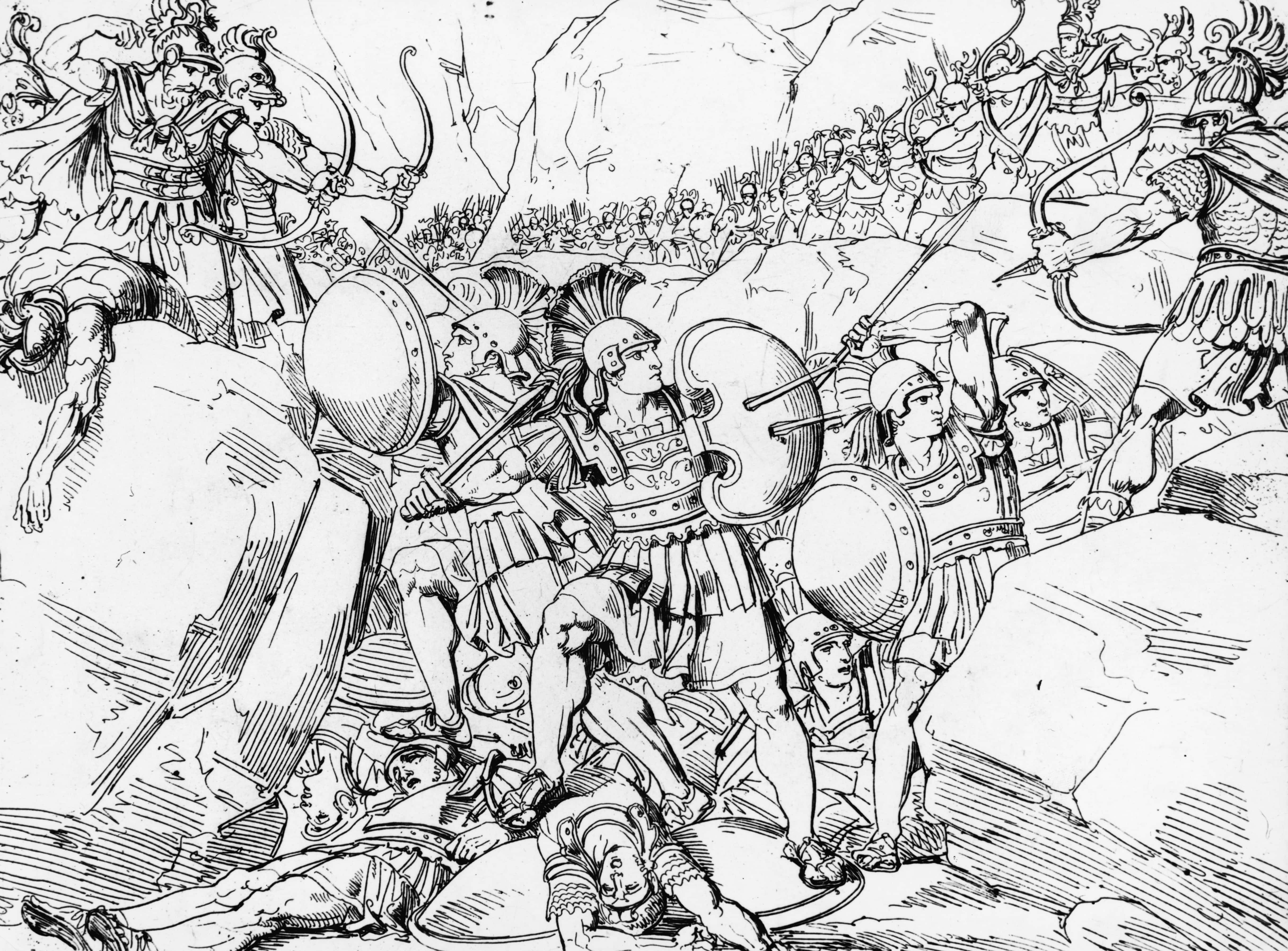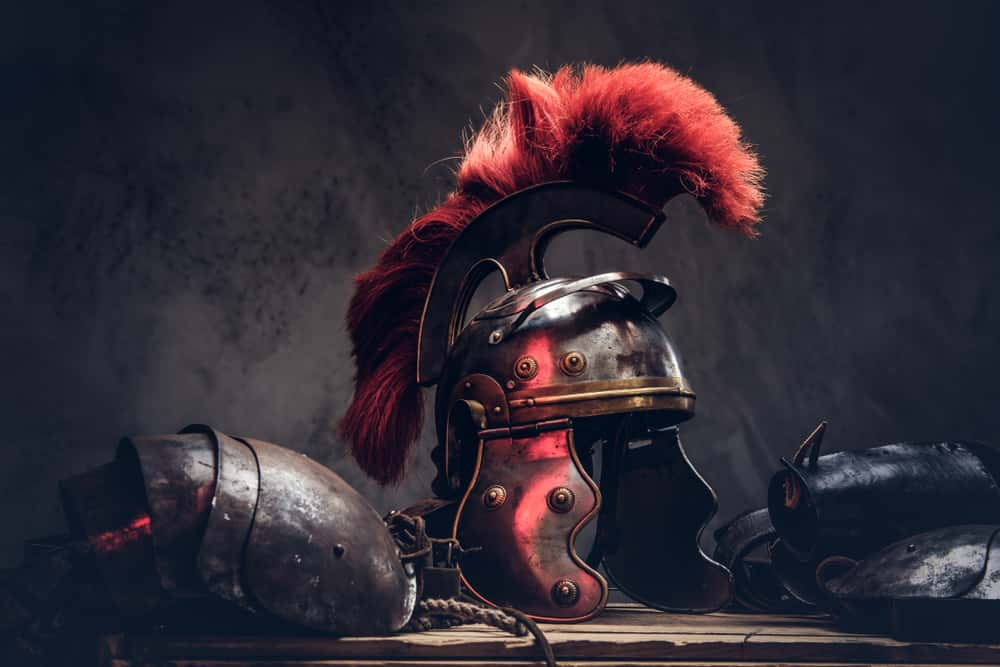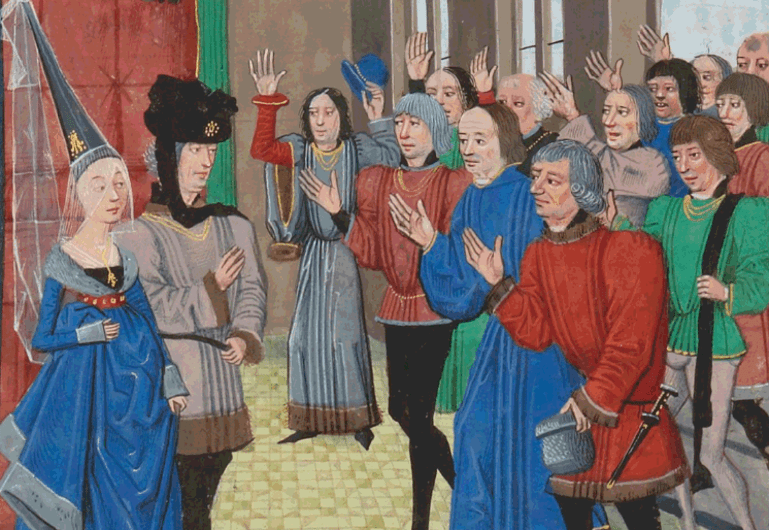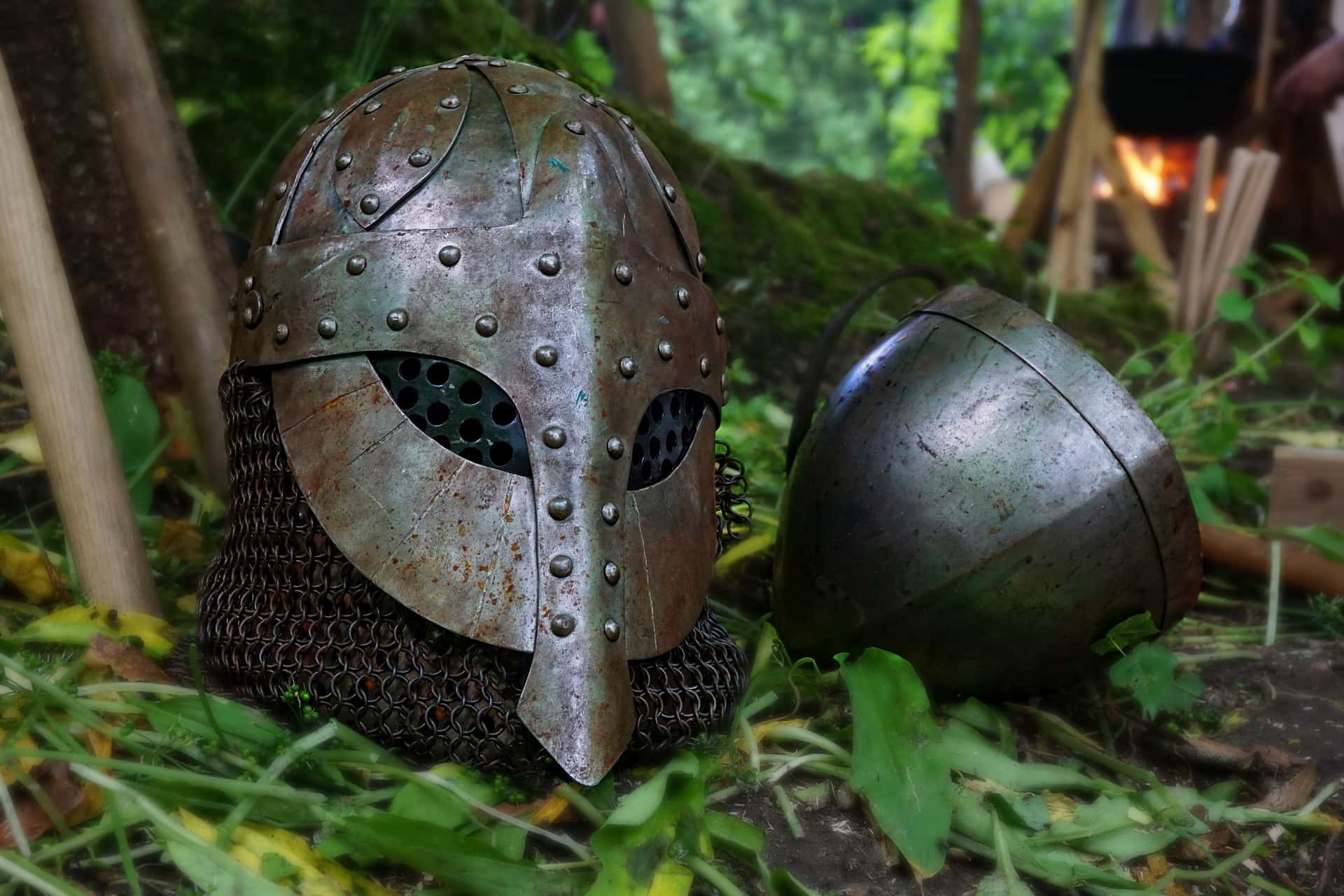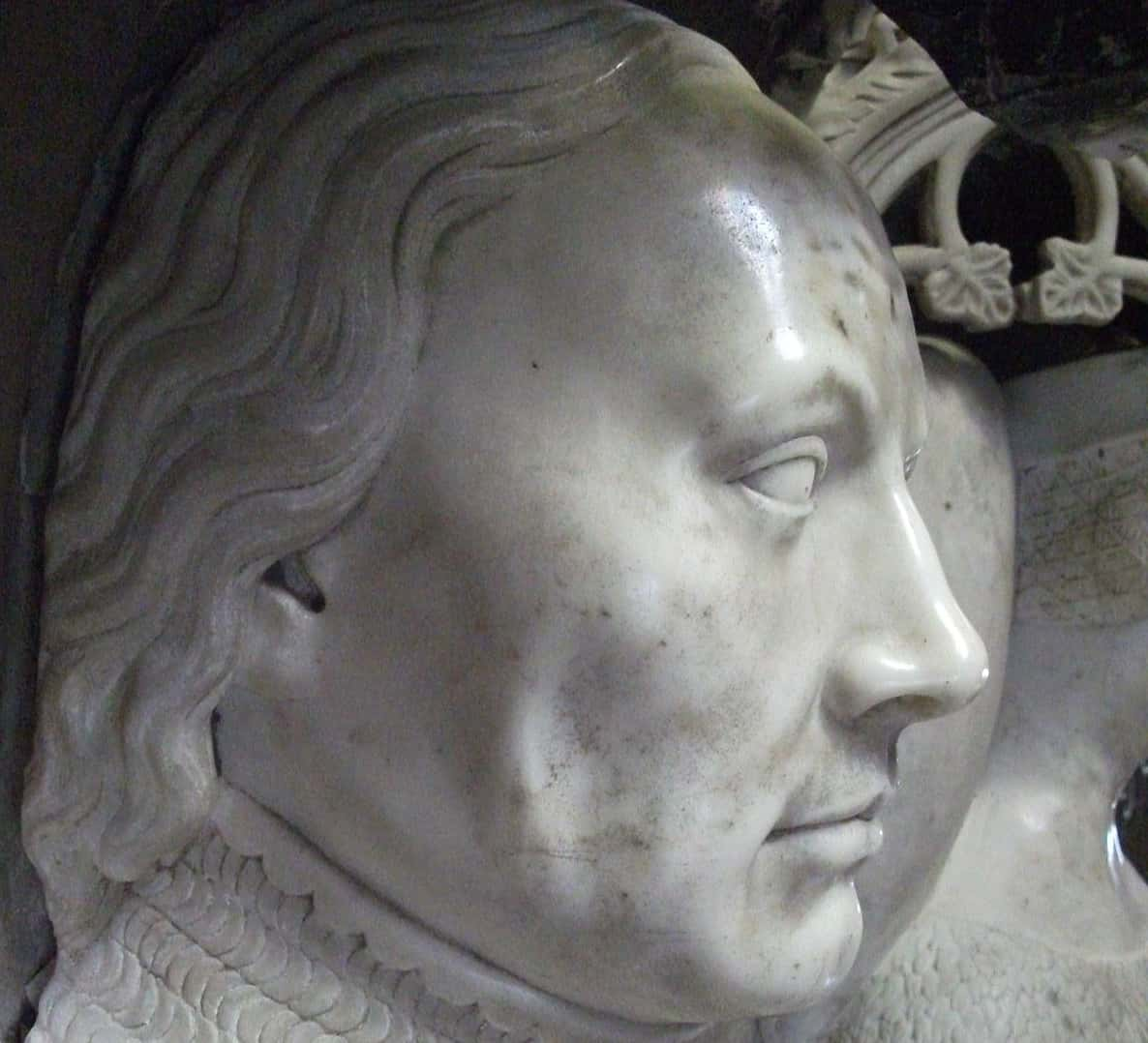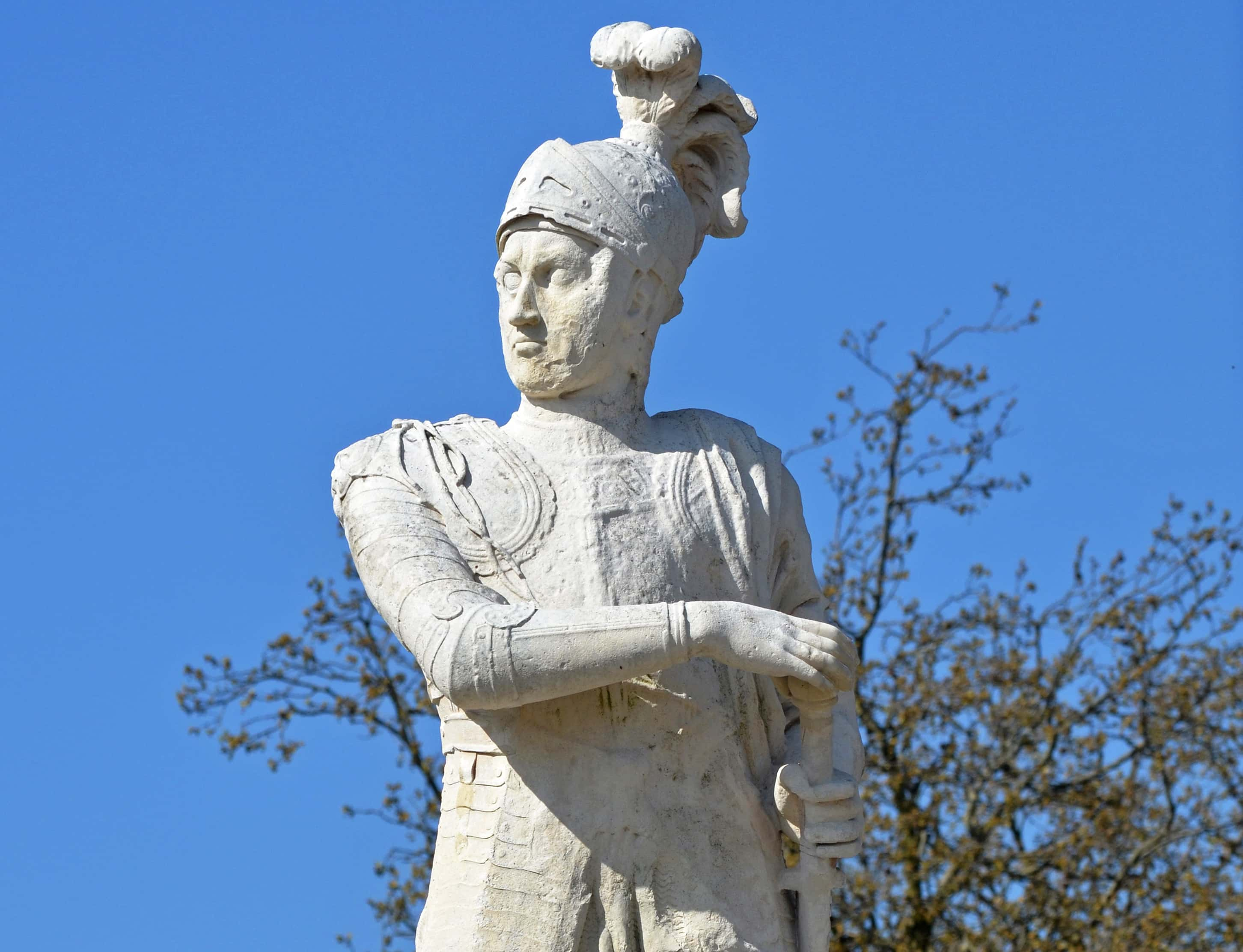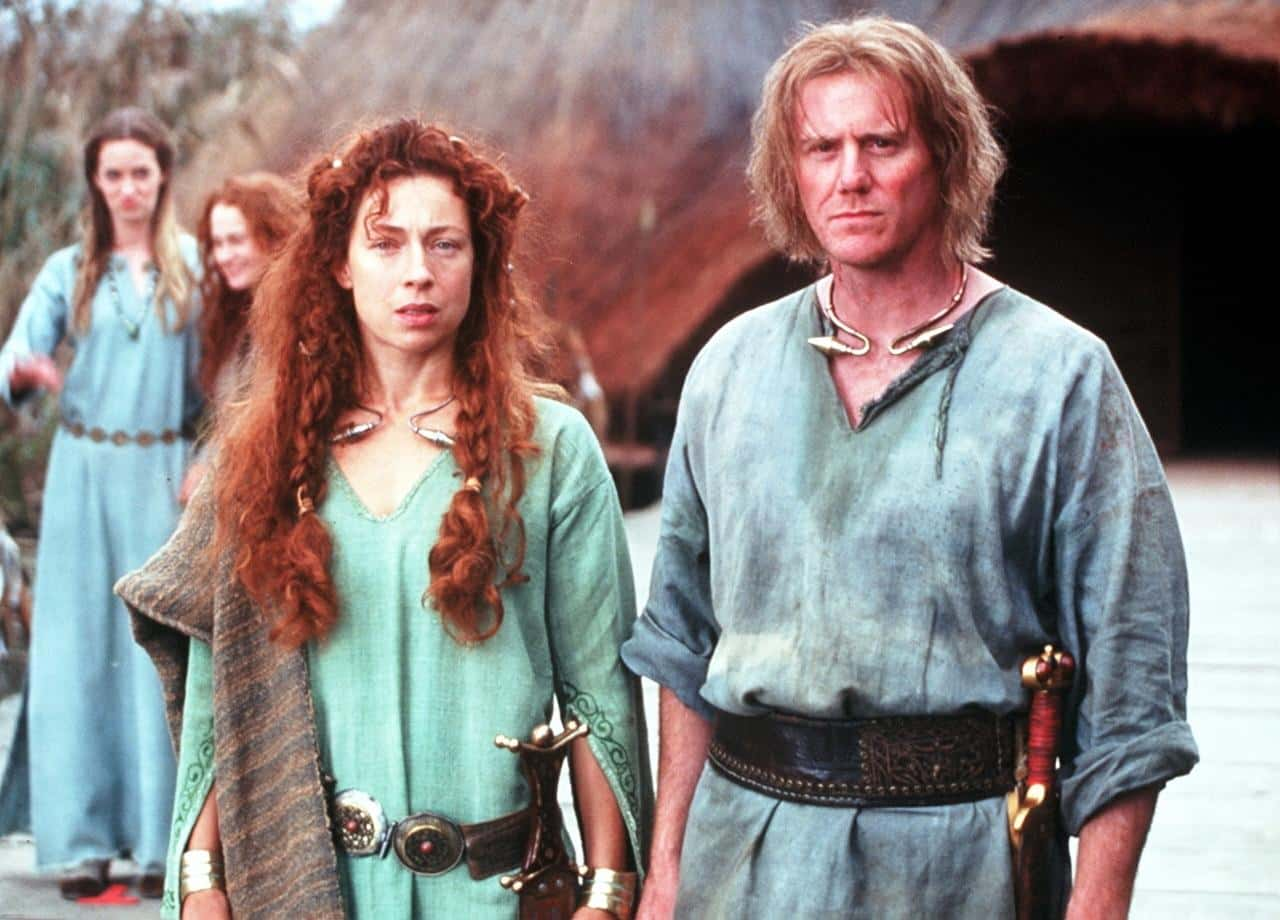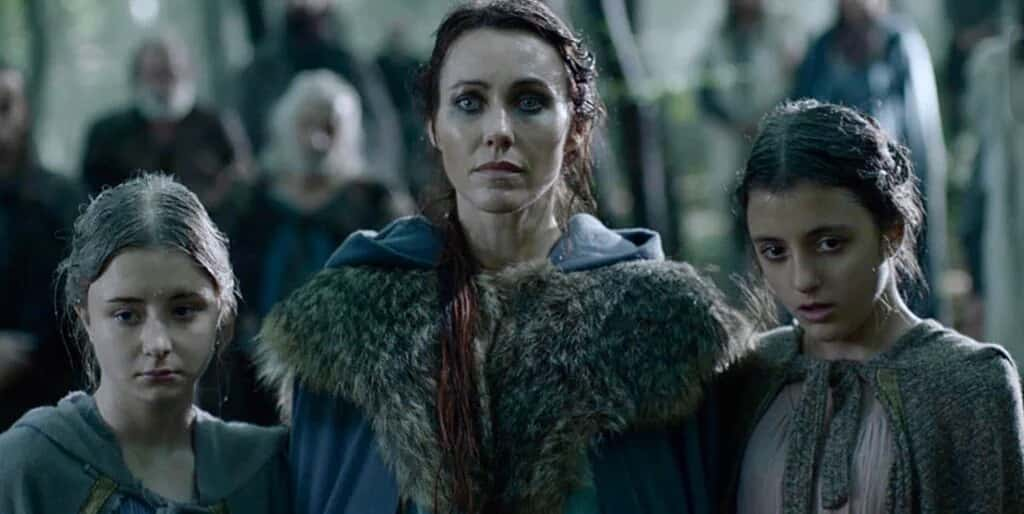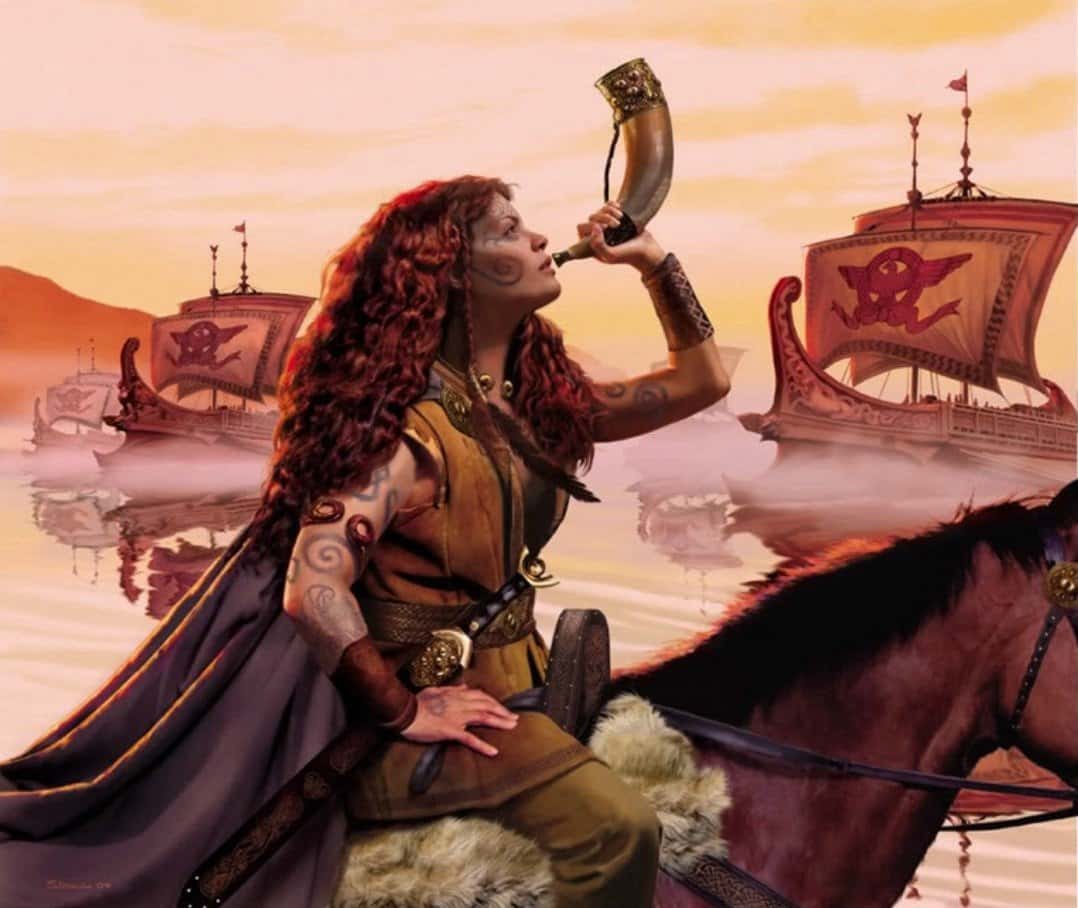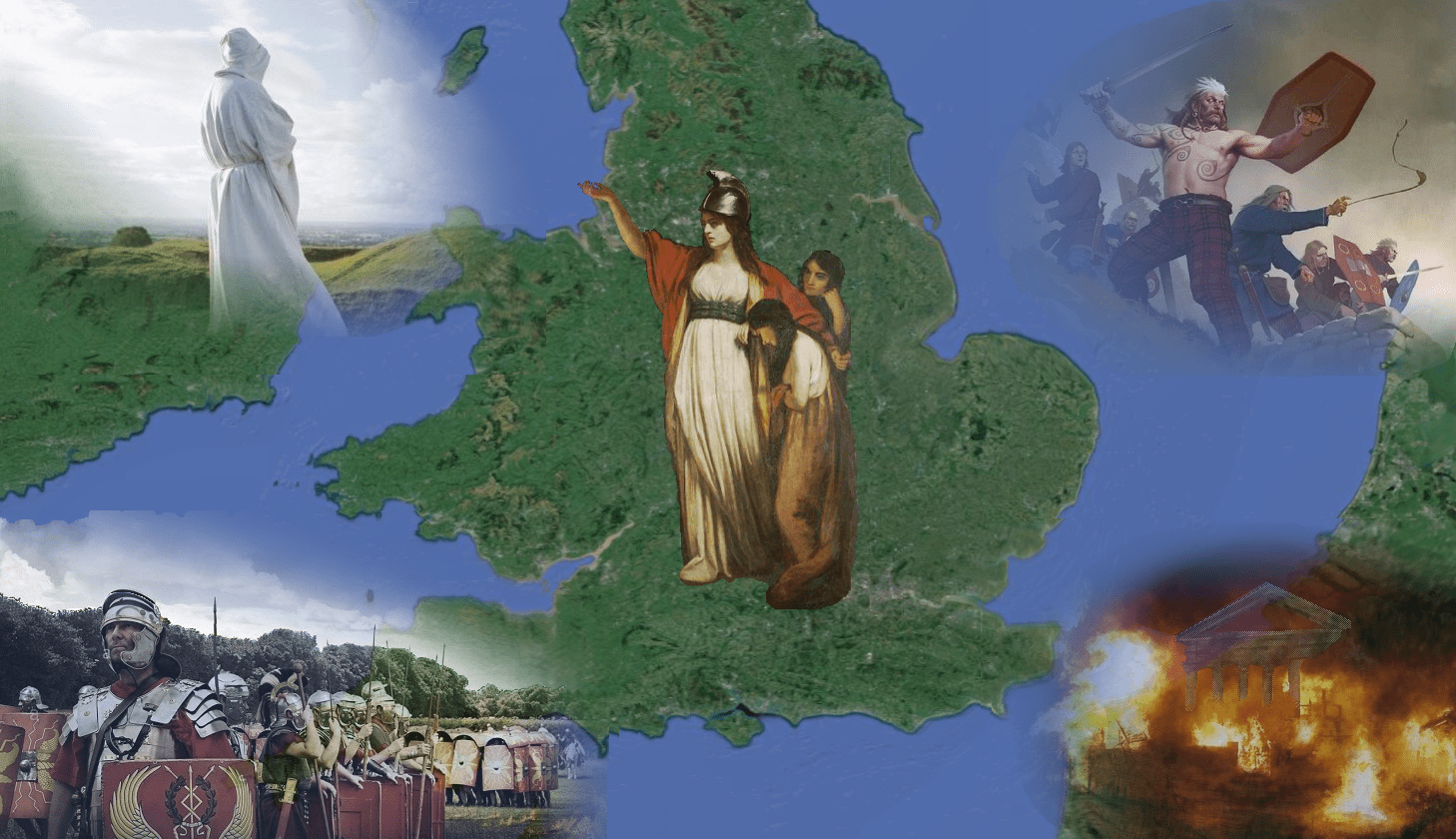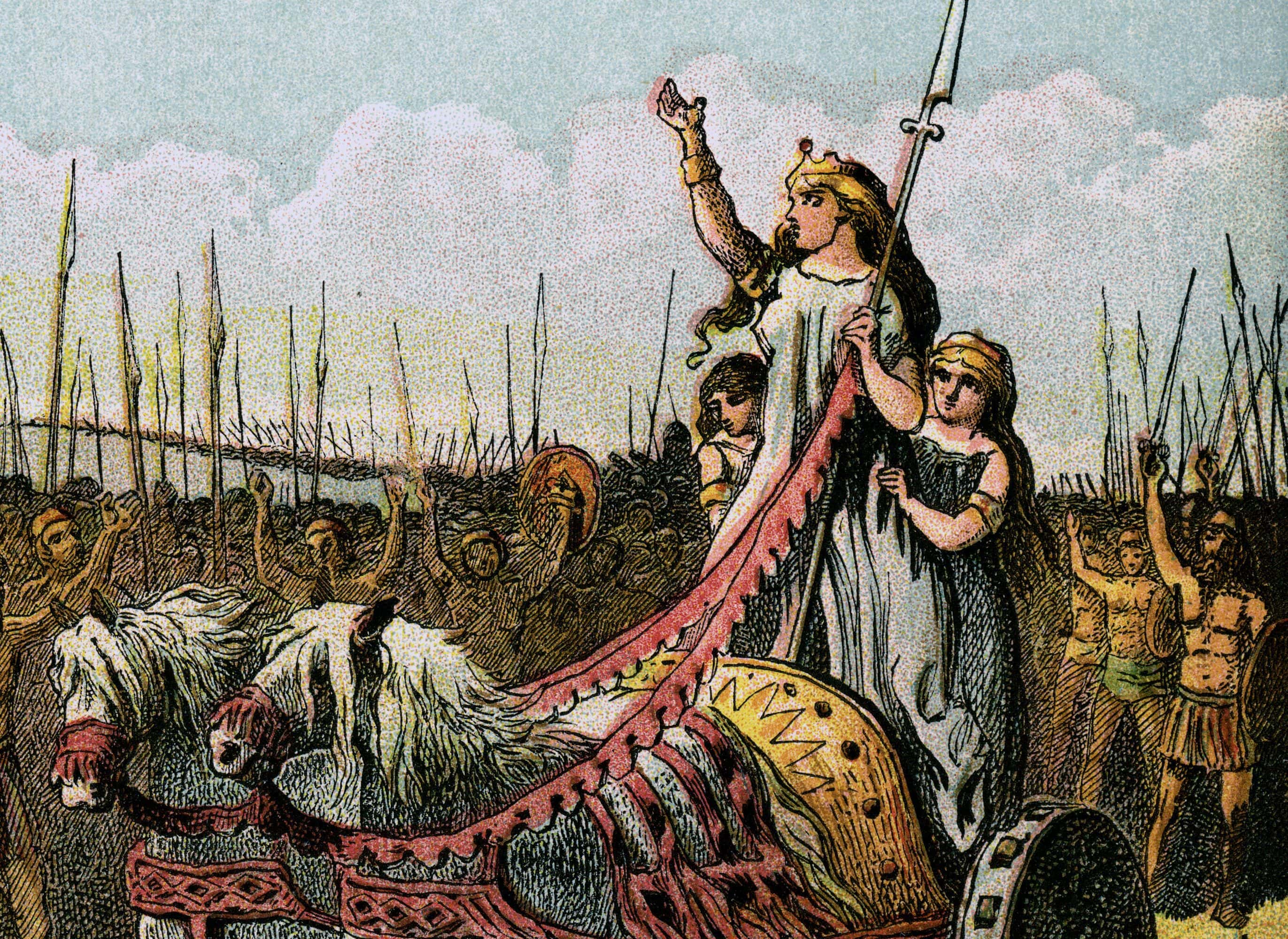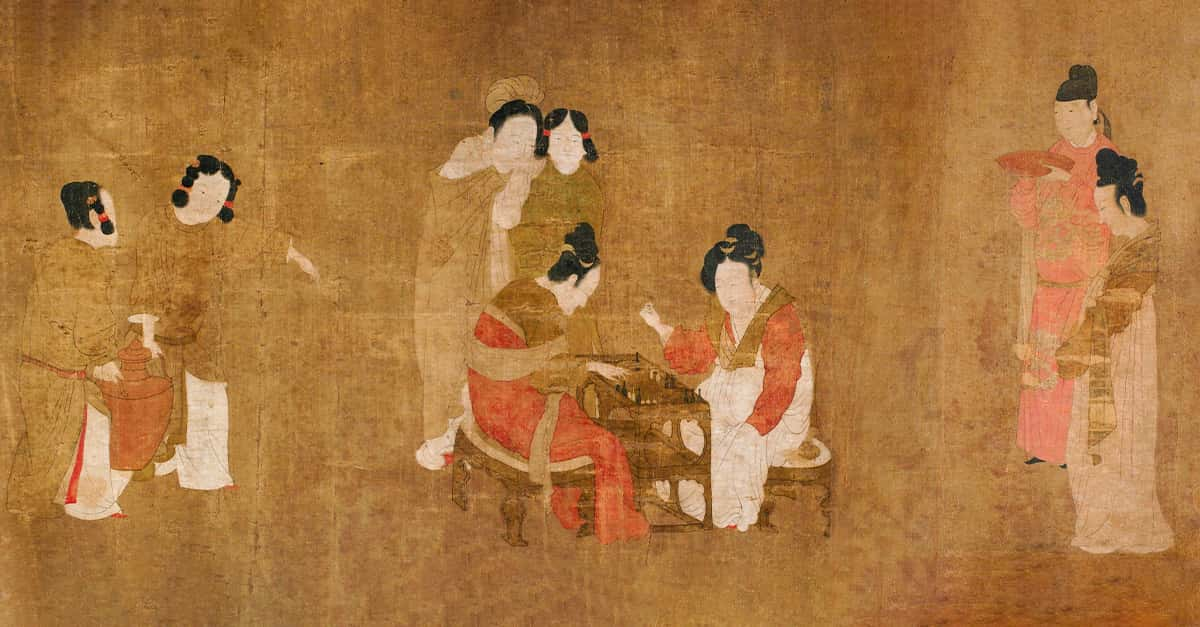Pirate Queens. Lethal duelists. Wild outlaws. Wonder Woman's got nothing on these deadly women from throughout history. Read on to discover the dark history of woman warriors from Calamity Jane to the Lioness of Brittany to the Rebel Queen Boudicca.
1. Princess #PowerMove
The Irish pirate queen Grace O'Malley was one tough cookie. Her plans as both a pirate and a resistance leader against English authority in Ireland triggered the irk of Queen Elizabeth I. But unlike many other "pirate scum," of the day, Elizabeth held O'Malley in high regard—and even deigned to meet with her.

2. Is the Queen's reign ending?
If the sources can be trusted, the meeting between O’Malley and Queen Elizabeth was rife with tension. For one thing, O’Malley arrived at the meeting hiding a dark secret. She had a cleverly concealed sharp-edged instrument under her dress! Upon its finding during a body search, Elizabeth's guards and courtiers understandably reacted with alarm. But O'Malley quickly clarified that she carried the implement for her personal safety, and not with any ill intention towards Her Royal Highness.
3. Imagine All Those Popping Monocles
The unearthing of the clandestine blade wasn't the culmination of the tension at O'Malley and Elizabeth's encounter. At one point, O’Malley shocked the English members of the meeting with an utterly disrespectful act. She brazenly blew her nose into a handkerchief and threw it in the fire. She actually had to tell Elizabeth that in Irish culture, a used handkerchief was immediately thrown away rather than reused.
 Warrior Women-Grace O'Malley, Discovery Channel
Warrior Women-Grace O'Malley, Discovery Channel
4. Like a Kardashian
O’Malley was born into pirate royalty. Her father, Owen "Black Oak" O'Malley, was the chieftain of the clan. The family had a long history with the sea and often made a living off being part-time pirates. So really, O’Malley was only continuing the family tradition.
5. A Hasty Divorce
In 1566, O’Malley married “Iron” Richard Burke—so named for his territory’s famous ironworks. Despite her new hubby's studly name, their marriage barely lasted a year. Allegedly, O’Malley made it clear that things were over between her and Burke when she leaned out of a window and screamed, “Richard Burke, I dismiss you!” Ouch…
6. And Don’t You Forget It!
O’Malley’s first name is an Anglicized version of her true name. Properly spelled from its Irish roots, it would actually read “Gráinne.” In Irish folklore and literature, she is also known by the name “Granuaile.” No doubt her ghost would get revenge if we didn’t point that out to you English readers.
7. Tomboy Stowaway
One legend about O’Malley’s childhood says that when she once wanted to go with her father on a voyage, he refused because she was a little girl. In defiance, she cut her hair, dressed as a boy, and joined the crew before anyone could uncover her disguise.
8. Maternal Instincts
According to the legends, O'Malley delivered her third son on a ship that fell under the assault of pirates just an hour later. Incredibly, the hot-blooded Irishwoman allegedly stowed her newborn inside her cabin and personally led the counter-attack—again, just an hour after giving birth. Very metal, O'Malley.
9. The Black Sheep
O’Malley’s second son was named Murrough, and he proved to be a bloodthirsty and misogynistic man. Despite all her accomplishments, he stubbornly denied his mother's authority simply because she was a woman. Even more disconcertingly, there are reports stating he physically harmed his sister on multiple instances. After this, O'Malley refused to speak to him.

History's most fascinating stories and darkest secrets, delivered to your inbox daily.
10. Connections
Julie d'Aubigny, the daughter of a French nobleman's secretary, didn't seem destined for an exciting life—but this was no ordinary French girl. D'Aubigny yearned for a life of adventure, and soon she would be one of the most feared duelists in the country.
 Warrior Women-Grace O'Malley, Discovery Channel
Warrior Women-Grace O'Malley, Discovery Channel
11. Arya Stark, Is That You?
Because her father was responsible for training the pages at the French Royal Court, d’Aubigny managed to get the same education as these boys, despite being a girl. Aside from dancing, d’Aubigny also learned how to read, draw, and fence with swords—which she got very good at. We can only assume that she nicknamed her fencing sword “Needle."
12. All at Once or One at a Time?
In 1695, d’Aubigny attended a society ball where a beautiful woman caught her eye. She proceeded to kiss the lady, much to the shock and outrage of three noblemen who had their own eyes on said lady. All three of these men, feathers all ruffling, challenged d’Aubigny to duels. The master swordswoman happily accepted.
Of course, she then beat all three of them.
13. Surprise!
During her time putting on fencing exhibitions, d’Aubigny was accused of being a man. One man claimed that no woman could be as skilled with a sword as d’Aubigny was. He never should have tested a woman as bold as her. Wasting no time, d’Aubigny took off her top and flashed the crowd to prove that even though she was wearing men’s clothes, she was definitely a woman.
14. Them’s Fighting Words
One of the most famous anecdotes about d’Aubigny is when she found herself in the town of Villeperdue. She was still wearing men’s clothes at the time, and she drew the ire of a young man, Louis-Joseph d'Albert Luynes, the son of a Duke. After she got sick of his insults, she challenged Louis-Joseph to a duel.
It was over before it started: She swiftly thrust a sword into his shoulder, and the nobleman admitted defeat.

15. On Second Thought
Of course, this triumphant duel wouldn’t be half as memorable without the crazy epilogue attached to it. After the duel, while Louis-Joseph was healing from his injury, he sent one of his friends to apologize to d’Aubigny on his behalf. D’Aubigny must have really appreciated him eating his words, because she later visited him in his quarters.
One thing led to another, and soon enough d'Aubigny was his lover. In fact, the two of them remained lifelong friends after that. Who knew dueling brought enemies so close together?
16. What’s in a Name?
So where did Martha Jane Canary, better known as Calamity Jane, pick up her famous nickname? According to her own stories, she was given the name by a leader named Captain Egan, who she helped to avoid a humiliating tumble from his horse. Egan then laughed and said "I name you Calamity Jane, the heroine of the plains," and the rest is history.
17. Spinner of Yarns
According to some of Calamity Jane’s contemporaries, her nickname has a more sinister origin. She completely made it up! In fact, one Captain Jack Crawford was noted to say that Jane never even participated in any of the armed forces regiments she claimed to have served in on the American frontier. Hardly a stretch to think Jane at the very least extended the truth a bit.
18. Working Girl
When Calamity Jane rolled into Deadwood, South Dakota, she certainly knew where to make all the right friends. She quickly ponied up the leading lady of the Black Hills: Dora DuFran. Jane not only became a close friend to DuFran, but she also worked for her in the adult industry. It was in this time that she came to know Wild Bill Hickok.
19. The Tell-All Scoop
Dora DuFran was a businesswoman, first and foremost. So even though they were good friends, she still dealt Jane a cruel betrayal. In 1932, DuFran wrote and published a scandalous 12-page booklet about her time spent with Jane, entitled Low Down Calamity Jane. It was quite successful—at least she waited nearly two decades after Jane's passing!
 Buffalo Girls, CBS Entertainment Production
Buffalo Girls, CBS Entertainment Production
20. The Cat’s Out of the Bag
Calamity Jane worked for Dora DuFran at the very first “cathouse” in Deadwood. Of course, the oldest profession in the world had been around long before Deadwood, DuFran, Calamity Jane, or even the United States ever existed. But the phrase “cathouse” was actually coined by DuFran to describe her saloon in the frontier town. And if Calamity Jane is any measure, those cats had claws!
21. Changing Tactics
Despite the fact that numerous armed forces officers stated that Jane fabricated many of her assertions, she staunchly reiterated her service record in a 12-page autobiographical pamphlet that she published. In her autobiography, she mentioned that she was once instructed to rush to Big Horn River carrying a set of communications for the armed forces.
According to Jane, she swam the Platte river and covered some 90 miles to make it on time to give the proper orders for General Crook—contrary to the statement by Captain Jack Crawford that she never once worked with Crook.
22. Making Friends
It was while Jane worked as a madam with Dora DuFran that she started her (in)famous relationship with Wild Bill Hickok and Charlie Utter. The pair rode into Deadwood one day, and it seemed only a matter of time for a woman like Calamity Jane, so thirsty for adventure, to come around to see what all the fuss was about.
23. Wild Wild West
Calamity Jane gained a lot of her notoriety as a frontierswoman in America due to her time with Wild Bill Hickok, who was a venerable Renaissance Man of the Old West. He was a vigilante, gunslinger, lawman, actor, producer, soldier, spy, wagon master, gambler, and showman. I mean, it’s hard to figure out what he didn’t do—and, according to Jane, she was right there next to him the whole time. In many ways, they were made for each other.
 Wild Bill 1995, The Zanuck Company
Wild Bill 1995, The Zanuck Company
24. A Generous Woman
Calamity Jane claimed in her biography that Wild Bill Hickok was only free to marry Agnes Lake because Jane herself gave the OK. She claimed that she and Bill were married for some time, but she suggested that they get a divorce so that Bill was free to get married to Lake, a woman he clearly loved. Yet, as with most yarns spun by Jane, no records exist to verify this claim.
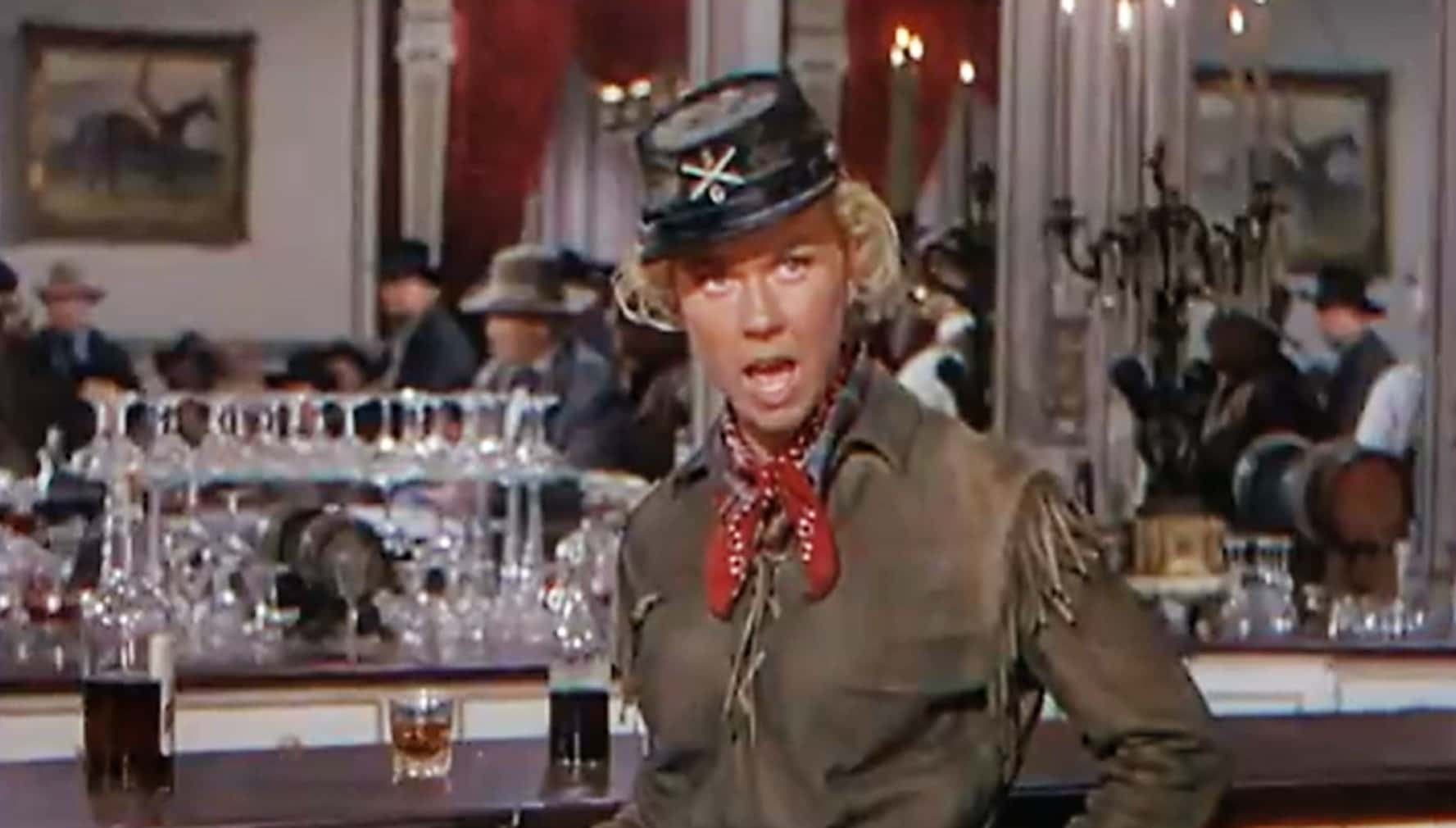 Calamity Jane(1953), Warner Bros
Calamity Jane(1953), Warner Bros
25. It was a Midnight Smash!
Mount Noriah Cemetery has its own collection of odd tales to tell travelers. Not only was Calamity Jane buried beside Wild Bill Hickok there, but Jane’s friend, Dora DuFran, was also buried there, alongside her husband and her parrot named Fred!
 Wikimedia Commons, Cortland V. D. Hubbard
Wikimedia Commons, Cortland V. D. Hubbard
26. The Hard Life
Embracing a life infused with mystery, adventure, suspense, and conflict can undoubtedly overwhelm even the most resilient individuals—but Jane endured a destiny more challenging than most. Towards the end of her life, Calamity Jane suffered from depression that was exacerbated by her alcoholism. Allegedly, she once became so inebriated that, during a short journey from Cheyenne to Fort Russell, she entirely missed her intended stop and unexpectedly arrived at Fort Laramie, roughly 90 miles beyond her destination!
27. A Sad End
Calamity Jane finally met her maker in the summer of 1903. She had been on a train to Terry, South Dakota and drinking heavily. She became so inebriated that she began to feel violently ill. With the help of the train conductor, a few men carried Jane to the local Calloway Hotel. A doctor was called but it was too late—she departed this life the next morning. The official report stated that the cause was due to inflammation of the bowels and pneumonia.
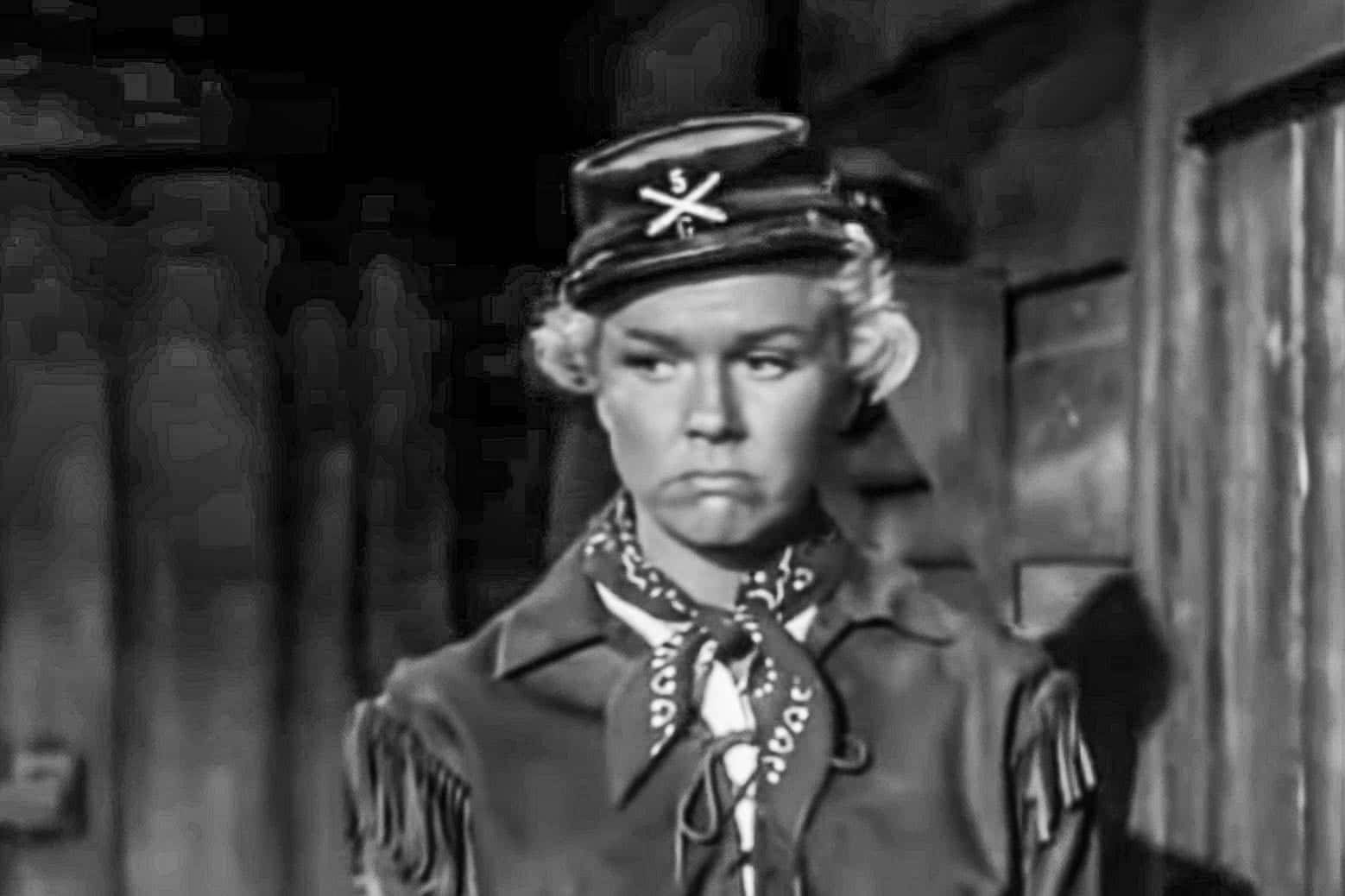 Calamity Jane(1953), Warner Bros
Calamity Jane(1953), Warner Bros
28. Is This Real Life? Is This Just Fantasy?
The American public couldn’t get enough of Calamity Jane when she started appearing in serial adventure stories like Deadwood and Calamity Jane: Queen of the Plains in the late 19th century. Jane seemed to have little say about the depictions of her, which meant they were entirely fictitious—and the public lapped it up. Not one to refuse fame, Jane was perfectly happy for her real life to be conflated with the exploits of the fictional heroine.
29. But How Wild?
The stories about Calamity Jane and Wild Bill Hickok's relationship and possible marriage seem to have been blown way out of proportion thanks to the tales of the American West and Jane’s own yarn-spinning. In reality, the pair had only known each other for about six weeks before Bill drew the hand of the man who was no longer living.
30. Humble Beginnings
For the tall-tales and the myths that proliferated through Jane’s life, her upbringing was perhaps more tumultuous. Her father was a Missouri farmer who had tried, albeit unsuccessfully, to change the lifestyle of her mother, immersed as she was in a life of scandalous profession. After her mother's demise in a mining camp and her father's subsequent departure in Salt Lake City, Utah, Jane, the eldest, found herself in charge of the family's care.
31. Uncle Sam Wants You… No, Not You!
To support her family after the loss of her parents, Jane, by the time she was 15, had begun working as a dancing girl and potentially engaging in the oldest profession. But that only lasted so long thanks to Jane’s desire to kick things up a notch. While performing for a group of servicemen one night, she emerged on stage dressed in their uniform.
At the time women could be fined for wearing men’s clothes, so the owner of the establishment swiftly kicked Jane out onto the street.
32. The Real Deal
After her brief time with Wild Bill Hickok, Jane’s life was probably less full of adventure and thrill-seeking than she let on. At the very least, she was married three different times. These were not successful partnerships by any stretch of the imagination—one of the men was even jailed for physically assaulting her.
33. Is That Your Final Answer?
When Calamity Jane (reportedly) led a mob against Wild Bill Hickok’s murderer, Jack McCall, after he was acquitted, they had the law on their side… err, kind of. Since Deadwood was an unauthorized settlement according to the Treaty of Fort Laramie, the law against double jeopardy was not applicable to McCall. That meant that after he was tried and acquitted in Deadwood, the ruling was declared illegitimate.
The mob then took him out of town to a Dakota Territory Court, where he was found guilty and promptly hanged.
34. Heed the Name
One of the more popular stories explaining the origins of Jane's nickname is linked to her period of working in the adult entertainment industry. The story goes that she gave frequent warnings to her male customers that if they ever stepped out of line, they would “court calamity.” That’s one way to keep the clients in check!
35. Let’s Get Him, Fellas!
After Jack McCall was initially cleared of accusations related to the demise of Wild Bill Hickok, it was rumored that Calamity Jane incited a crowd to seek out McCall and exact their merciless retribution. This, the tale goes, is what led to the second trial and eventual execution of McCall. But like so many of the stories about Jane, the evidence points to the contrary.
She was reportedly incarcerated by the armed forces at the time of Bill's demise, so she couldn't have led the mob.
36. Love You… Forever?
Calamity Jane made sure she was buried next to Wild Bill Hickok because, as she claimed, it was what they both wanted. Apparently, Bill was less enamored with the idea, but the pair were still buried together...as a practical joke! The four gravediggers who buried Jane figured Bill didn't really harbor any feelings for her, yet decided to place her next to him as one last dig at the man.
37. A Calamitous Affair
Calamity Jane certainly earned her nickname during her lifetime, but even she couldn’t have predicted what was going to happen when she traveled to the Pan-American Exposition as a part of Buffalo Bill’s Wild West variety show in 1901. The exposition coincidentally was the location where the Polish-American anarchist Leon Czolgosz carried out the fatal attack on American President William McKinley. Quite an unfortunate incident!
38. Give up the Ghost
Jane’s reputation might have made her the star of her day—gracing the pages of dime store novels and Buffalo Bill’s Wild West Show—but it wasn’t always a positive aspect of her life. She had to give her daughter Jessie, whom she once called "all I've got to live fer... my only comfort," up for adoption when the girl was just ten years old.
It appears that Jessie had endured harassment from other children due to her famous Ma.
39. Bow Down
Most people know Artemisia I of Caria as the femme fatale character played by Eva Green in 300: Rise of an Empire. But she was a real warrior woman and pirate queen who fought for the Persian king Xerxes. In all of Xerxes' massive army, Artemisia was the only female commander.
 300: Rise of an Empire, Warner Bros.
300: Rise of an Empire, Warner Bros.
40. Long Live the Queen
Artemisia reigned as the queen of Halicarnassus (a Greek city in modern-day Turkey) for 24 years. To put it into perspective, Alexander the Great only ruled for half as long as she did!
41. Like Woman Like Goddess
The origin of Artemisia’s name is rooted in the Greek goddess Artemis. Interestingly, two of the goddess’s main traits were her skill at archery and her tomboy attitude. If Artemisia’s parents were hoping that she’d be inspired by her namesake, they must have been thoroughly pleased!
42. You’re Not My Type
We're not certain we need to clarify this, but just so there aren't any misconceptions, 300: Rise of an Empire isn't a documentary. Contrary to the plot, Artemisia did not attempt to manipulate the Athenian leader Themistocles to betray the Greeks through intimate relations. That was a scene purely invented by the film’s screenwriters obeying unwritten laws of how Hollywood creates female characters.
 300: Rise of an Empire, Warner Bros.
300: Rise of an Empire, Warner Bros.
43. Bow to the King of Kings!
While Artemisia was considered a queen in her own right, she was subservient to the Persian Empire, specifically the Achaemenid dynasty. In the 6th Century BC, Cyrus the Great and his general, Harpagus, conquered Caria and made it a province of the empire. If Artemisia resented this subservience, she didn’t show it, as she would go on to be a useful ally to the Persians (more on that later).
 300: Rise of an Empire, Warner Bros.
300: Rise of an Empire, Warner Bros.
44. Surprise!
Artemisia was a brave warrior and leader, but she could also be utterly devious when she had to be. She allegedly sailed with two different flags on board her ship: one that was aligned with the Greeks, and another with the Persians. When she caught a Greek ship unawares, she’d fly the Greek-affiliated flag to get as close as possible before showing her true colors, so to speak.
 300: Rise of an Empire, Warner Bros.
300: Rise of an Empire, Warner Bros.
45. Was the Battle Named After Her??
While Artemisia was best known for her role in the Battle of Salamis, she was also one of the prominent Persian commanders at the Battle of Artemisium (how fitting!). This battle happened at the same time as the Battle of Thermopylae, where Leonidas and the 300 Spartans (...and hundreds of other greeks and slaves) held off the Persian armies at the pass known as the Hot Gates.
46. Respected by Foes
One thing which separates Artemisia from most of the other commanders in the Persian army was how she was viewed by the historians who wrote about the invasion, even if they were Greek. While he’s come under fire for his exaggerations and anti-Persian bias, the Greek historian Herodotus had nothing but admiration for Artemisia’s confidence in leadership, as well as her remarkable intelligence.
47. Did He Have a Crush on Her?
The funny thing about Herodotus’ writing about Artemisia is that it landed him a particular kind of criticism. He openly admitted that he didn’t want to talk about the other Persian commanders who served Xerxes. He was far more fascinated by Artemisia and her example on the battlefield of Salamis.
 300: Rise of an Empire scene, 2014 Warner Bros.
300: Rise of an Empire scene, 2014 Warner Bros.
48. Like a Carian Brienne of Tarth
The historian we know as Justin famously praised Artemisia for her incredible courage during combat, saying it shamed most of the men whom she fought alongside. He joked that wherever Artemisia was present in combat, “you might have seen womanish fear in a man, and manly boldness in a woman.”
 300: Rise of an Empire scene, 2014 Warner Bros.
300: Rise of an Empire scene, 2014 Warner Bros.
49. Did she also have a drink?
Artemisia has often been described as being a pirate queen, but whether she committed piracy or not depends upon your definition of piracy. Today, we think of pirates as bands of outlaws on the high seas with no allegiance to any nation. However, during Artemisia’s lifetime, piracy was commonly committed by armies that were directly sponsored by nations or city-states.
50. Look Me Up!
During the 10th century AD, the Byzantine Empire produced the Suda, an encyclopedia of the ancient Mediterranean world. This remarkable work, with 30,000 entries, is naturally held up as a priceless artifact of antiquity. Such was Artemisia’s impact upon history that she got her own entry in the Suda.
 ... A Dusty Old Book | by wuestenigel
... A Dusty Old Book | by wuestenigel
51. A Fitting Tribute
Centuries after she ceased to be and the decline of the Persian Empire, Artemisia is still honored by modern-day Persians. In 1967, Iran purchased a British destroyer called the HMS Sluys. It became the biggest destroyer in the Iranian fleet at the time and was renamed Artemiz in honor of Artemisia. Given that it was a powerful ship being sailed by Persians, we can imagine Artemisia would have been proud to have her name attached to it!
52. There’s a Silver Lining
While the Persians and their allies were either pulling back or meeting their end in Greece, Artemisia was among those who endured the invasion. She was sent by Xerxes to Ephesus and given charge over his illegitimate sons. She would remain an ally to the Persians for the rest of her life.
 300: Rise of an Empire, Warner Bros.
300: Rise of an Empire, Warner Bros.
53. You Don’t Scare Me!
During the Second Persian Invasion of Greece, Artemisia made a very prominent reputation for herself. SHe was reportedly so despised by the Greeks that a 10,000-drachma bounty was placed on her, whether she was captured in any condition or still breathing! As you can imagine by now, this didn’t stop Artemisia from continuing to fight on the front lines!
54. Time to Call it Quits!
According to Herodotus, it was actually Artemisia who advised Xerxes to leave Greece after the disastrous Battle of Salamis. She allegedly urged him to retreat and leave his general Mardonius with the main army behind to turn the tide. She reasoned that if Mardonius won, the honor would still belong to Xerxes, since Mardonius was winning that victory on his behalf. If it was a defeat, Xerxes would be safely back in Persia anyway.
Xerxes took her advice and avoided getting caught up in the Battle of Plataea.
55. Is That Ironic?
Despite the massive defeat of the Persian fleet at Salamis, Xerxes publicly acclaimed that among all his commanders, Artemisia had equipped herself with the utmost courage, strategic insight, and leadership acumen. In gratitude for her role in the battle, Xerxes gave her a full suit of the finest Greek armor, which had been taken during the invasion.
56. You Asked for It!
In 493 BC, Xerxes demanded the tribute of earth and water from the island of Cos, but its people refused to submit to the Persian King. Artemisia was sent to deal with them—and her invasion was unspeakably brutal.
57. Whoops!
Despite her exceptional skills in battle and her brilliant intellect, Artemisia was still prone to making errors. According to The Histories, there was a moment during the Battle of Salamis where Artemisia sailed her ship right into another one as she was being pursued by enemy Greeks. The problem was that the ship she rammed into belonged to her allies!
58. No Biggie?
Naturally, such an accident would have serious consequences with your boss if they happened to see it—and Xerxes famously set up a throne on the shore to watch the Battle of Salamis unfold. Luckily for Artemisia, he was far enough away that he couldn’t recognize which boats belonged to which side, so her mistake wasn’t noticed. Well, except by the people whose boat she rammed, of course…
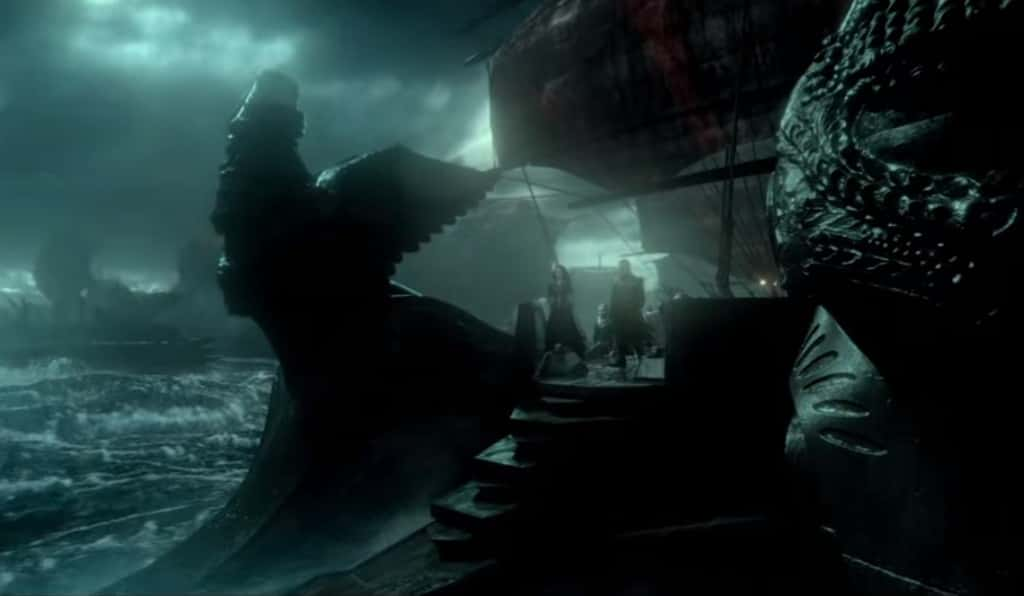 300: Rise of an Empire, Warner Bros.
300: Rise of an Empire, Warner Bros.
59. A Celebration You Won’t Forget!
Another instance of Artemisia's cunning being put to devastating use was given to us by 2nd-Century historian Polyaenus. Artemisia was hoping to conquer the city of Latmus, so she came up with a devious plan. She held a huge party just beyond the city. Naturally, all the commotion caused the city’s inhabitants to wander over, and when enough people did so, Artemisia launched her sneak attack when everyone’s guard was down!
 300: Rise of an Empire scene, 2014 Warner Bros.
300: Rise of an Empire scene, 2014 Warner Bros.
60. Maybe Rethink This?
Artemisia was the only commander in the Persian fleet to advise Xerxes that a naval battle must be avoided. She was smart enough to realize that the Greeks were strong in the waters of their home shores, and she was convinced that they could hold their own, even when they were outnumbered. If anyone else shared her doubts, we don’t know about them, because Artemisia was allegedly the only person bold enough to say anything contrary to Xerxes’ intentions.
Though Xerxes admired and respected Artemisia for her blunt honesty, he ignored her advice and sent the fleet to pursue the Greeks—and to their doom.
 300: Rise of an Empire, Warner Bros.
300: Rise of an Empire, Warner Bros.
61. One for Every Spartan?
Sadly, for Xerxes, Artemisia was proven right when the Persian fleet was lured into a trap, and the Greek ships crushed their enemies. Led by Themistocles, the Greeks lost 40 ships, while up to 300 ships were lost by the Persians.
 300: Rise of an Empire scene, 2014 Warner Bros.
300: Rise of an Empire scene, 2014 Warner Bros.
62. Taking Rejection Badly
The circumstances surrounding Artemisia's passing remain a mystery, albeit a legend was recorded by Photius, a writer from the 9th century AD. Near the end of her life, Artemisia supposedly fell in love with a prince named Dardanus, but he refused her advances and didn’t reciprocate her feelings. Enraged, Artemisia allegedly blinded Dardanus while he was still asleep!
63. I Don’t Believe it!
According to Photius, Artemisia was so in love with Dardanus that even after she’d blinded him, she still couldn’t get over him. As a result, Artemisia opted to end her own life by throwing herself into the sea. Most historians think this is an apocryphal story. Not only was Photius writing about Artemisia more than 13 centuries post her existence, but it also contrasts with everything else we know about Artemisia.
64. A Fitting Moniker
As a pirate/privateer in the English Channel, Jeanne de Clisson was known as “The Lioness of Brittany.” She got this nickname because she was known to raid villages or towns and slaughter their populations, leaving only a few survivors to spread the word that de Clisson’s wrath was not to be trifled with.
65. Silver Spoon in my Mouth
In case you thought that Elizabeth Swann’s character in Pirates of the Caribbean was too unbelievable, the privateer de Clisson was born into a noble family. Her parents were Maurice Montaigu and Letice de Parthenay.
 Pirates of the Caribbean: At World
Pirates of the Caribbean: At World
66. Starting Early
Back in the 14th century, the short lifespan of the average person meant that people started adulting at an appallingly young age. This was the same situation for de Clisson. At the age of 12, she was married to Geoffrey de Châteaubriant VIII, a 19-year old nobleman in Brittany.
67. Out with the Old, in with the New
In 1326, de Clisson's first husband met his end. They’d had two children together when de Clisson was still a teenager. De Clisson quickly remarried, to Guy de Penthièvre, less than two years later. It's believed she made this match in order to support her two young ones.
68. Narrowly avoided trouble!
Unfortunately for de Clisson, this second marriage was annulled by the Pope in 1330, thanks to some meddling by the family of her new husband's first wife. Ironically, Guy of Penthièvre would cease to exist shortly after getting married yet again.
69. Over a Dozen Years? Sounds Like Real Love!
The same year that de Clisson’s second marriage was annulled, she got married for a third time, to the man who would give her the surname by which she is known. This man was Olivier de Clisson, the fourth person in his family to hold that name. He would be married to de Clisson for around thirteen years and they would produce five children together.
70. The Domestic Conflict
One specific reason why de Clisson and her family got engaged in the hundred-year conflict was due to the Breton Succession dispute. In Brittany, a conflict arose over who was in charge of the region. The two claimants were Charles de Blois and John of Montfort. The French and English both exploited this conflict so that they could forward their own agendas. The English backed the House of Montfort, while the French supported the House of Blois.
71. Which Side was Iron Man and Which Side was Captain America?
Speaking of that Breton conflict occurring during de Clisson's life, she and her husband's family weren't above choosing allegiances. They mostly sided with Charles de Blois and his cause, but de Clisson’s brother-in-law, Amaury, would buck the trend and side with Montfort instead.
72. I Existed!
Many people throughout history have argued that such a figure as de Clisson couldn’t possibly have existed. A swashbuckling, merciless pirate bent on revenge, and a woman to boot? No way...yet there are several historical sources that confirm her existence. These include several historical chronicles, French court records listing her as a traitor, and even the 1347 Treaty of Calais, which named de Clisson as an English ally.
73. Who Claimed Conflict was Only for the Youth?
Interestingly, despite being known for taking up arms against her enemies (more on that later), de Clisson didn’t do so until she was already in her early 40s. Talk about a late bloomer!
74. We’ve Had Better Days
In 1342, the English laid a series of sieges against the Breton town of Vannes, whose garrison was commanded by de Clisson’s third husband, Olivier de Clisson. Eventually, the town fell to the besiegers and Olivier was captured, but he was ransomed back to Charles de Blois.
75. Catelyn Stark Sends Her Sympathies
Due to the surprisingly low asking price that the English asked for Olivier, de Blois started to believe that the man had betrayed him. In 1343, Olivier was invited to a tournament outside of Brittany—but he had no clue what dark fate awaited him. De Blois' men ambushed him, took him into custody, and put him on trial for treason.
Olivier de Clisson was executed in Paris that year, much to the shock of his wife.
76. It’s on Now!
While it remains uncertain whether de Clisson's third husband truly betrayed them, she was deeply convinced that Charles de Blois and the King of France were responsible for causing his fatal end. The fact that no evidence was presented to prove Olivier's guilt only made her more convinced. Driven by revenge, she sold her husband’s entire lands and her personal belongings to rally a small group of combat-ready individuals.
77. The Blood of Angry Men!
Since she was attacking her former allies anyway, it made sense for de Clisson to go whole hog and switch sides. The English and their Breton allies were only too happy to supply her, which led to de Clisson taking to the sea. She formed a small fleet of ships that eventually came to be known as the Black Fleet, for the color that the wood was painted.
They were also decked out with red sails, in case anyone was confused by de Clisson’s vengeful purpose.
78. Golden Child
Arguably the most successful of de Clisson’s children was her son, Olivier. After his father's departure, young Olivier would fully engage in the life of the armed forces. He was reportedly known as "The Butcher," (and we can infer it wasn't due to any trades he mastered beyond combating adversaries on the battlefield).
79. Career Soldier
Olivier Jr. was present for many significant events during the Century-Long Conflict, aligning himself with both the English and the French at various stages of his life. He would rise high in the ranks, even to the position of Constable of France. Despite his violent reputation, the Butcher managed to live a very long life, finally dying in 1407 at the age of 71.
80. The Iron Lady of Brittany
In 1359, de Clisson met his end from unknown causes in Hennebont, Brittany. She was 58 or 59 years old, an astonishing age for anyone in the Middle Ages. Consider this, she would have also survived the worst of the devastating Plague, which makes her reaching almost 60 an absolute wonder!
81. “Wrath of Jeanne” was Too On-The-Nose
In case anyone was confused by de Clisson’s intent when she outfitted a small fleet of ships, she named her flagship My Revenge. It’s safe to say that this was the most fitting name for a ship in French history!
82. No Rest for the Lioness
Though her life ended in Hennebont, it's long been said that de Clisson's ghost made the journey back to Clisson Castle, where it is believed she still roams the halls to this day.
83. An End to the Conflict
Though de Clisson didn’t live to see it, her one wish in life ended up being fulfilled. Charles de Blois met his end in battle in 1364, and the quest of the Montfort side to rule the Duchy of Brittany ultimately proved successful.
84. Love Match
Unlike most marriages at the time, it seems that Olivier and Jeanne de Clisson married for love—which made Olivier’s betrayal and execution all the more painful.
85. A Grim Reminder
After Olivier de Clisson was executed, his body was put in a Gibbet in Paris, while his head was sent to Nantes. Filled with grief and rage, Jeanne did something unthinkable. She took her sons to Nantes to show them their father's head and remind them that he had fallen victim to Charles de Blois and the King of France.
86. It’s Almost Poetic
In total, de Clisson’s time as a vengeful pirate would last 13 years. We'd like to believe that she claimed one year for every year she was married to her third husband, the very reason she turned renegade. It's too befitting to disregard!
87. An Axe to Grind
According to legend, the few survivors of the Black Fleet's massacres always told the same, chilling story. The pirates would board French ships and slaughter nearly everyone inside, while de Clisson herself would personally behead any nobles with her wicked ax—a fitting revenge for her husband’s grim demise.
88. Spread the Word!
Before all the piracy, the very first of de Clisson’s actions in revenge for her third husband’s execution was an attack on the castle of Touffou. Loyal to Charles de Blois, the castle resisted de Clisson’s assault but eventually fell. On de Clisson’s orders, all but one of the castle’s population was massacred.
89. Victory
Boudicca is an ancient Celtic name which is derived from the word “boud,” meaning victory. Little is known about her prior to her marriage to Prasutagus, king of the Iceni tribe, but maybe her parents had a premonition of what her life was to hold!
90. How About an Alliance?
Around 43 CE, the Roman Emperor Claudius started conquering Britain, and the Iceni people, who until this point had been left alone, saw the writing on the wall and knew it would only be a matter of time before the Romans invaded their lands. In exchange for the Romans agreeing not to completely conquer the Iceni, they agreed to support Rome, which basically was a cheap way for Rome to control a territory without going to the trouble and expense of ruling it themselves.
91. She’s Kind of Scary!
Based on descriptions of Boudicca by ancient historians, she was a terrifying figure. She was described as being of above average height, having a “piercing gaze,” waist-length fire-red hair, a harsh voice, and possessing a “greater intelligence than often belongs to women” (OK, not the greatest compliment, but from an ancient historian, that was about as good as it gets for a woman). In other words, you wouldn’t want to mess with her!
92. Rule This for Us- Will You?
Following the brief Iceni uprising against Rome, the Romans allowed Prasutagus to rule as a Client King or Proxy Ruler of the Iceni People. While he did have a certain amount of independence as King, Rome fully expected to assume complete control once his life ended. It was kind of an "I'll keep your seat warm for you" situation.
93. Last Will and Testament
Boudicca bore her husband Prasutagus two daughters but no sons, therefore in his absence, he had no male heirs. He attempted to play politics and win protection for his family by willing half of his wealth to his daughters and the other half to Emperor Nero, but this backfired in a major way and ended up resulting in the seizure of his kingdom and his family’s humiliation.
Definitely not what he had in mind!
94. Taking Control
Upon the passing of Boudicca's husband Prasutagus, the Romans came to take over their lands. According to some historians, the army was given orders to "subdue the territory completely." While the exact reason for the extreme action isn’t known, it’s believed that they either wanted to quash future rebellions by the Celtic tribes, or that they were seizing it as repayment for unpaid debts on the part of the king.
95. Women’s Rights
Celtic Law in Boudicca’s time was surprisingly forward thinking when it came to women’s rights. Women could rule, they could participate in politics, religion and the arts, and had control of who they married and the right to divorce under certain circumstances like ill-treatment. In instances of forced assault or inappropriate behavior, a woman possesses the right to retaliate on her own. While there were no specific guidelines for what her revenge might look like, there are stories of Celtic queens having heads cut off and administering lethal substances to the offender.
96. Brutal Humiliation
The Romans didn’t give a wit about Celtic law, and according to their laws, Boudicca and her daughters had no rights to any of Prasutagus’ wealth or kingdom, and the Romans certainly weren’t going to jointly own anything with a woman. As if it wasn't enough that they immediately pillaged his house right after his life tragically ended, they allegedly whipped Boudicca and violated her two young adolescent daughters. No wonder she wanted revenge!
97. Women Rule!
Boudicca’s legend was seen by the Romans as a cautionary tale for what happens when women are allowed to rule, but two British queens took a different view of the story. In the 16th century, Queen Elizabeth I used it to solidify her own rule and to demonstrate that a strong British Queen fighting a foreign power wasn’t without precedence.
In the 19th century, Queen Victoria saw herself as Boudicca's successor and used the story as proof of her own right to hold power.

98. Lesson Learned
When Boudicca launched her rebellion, the Romans were basically caught with their pants down, but nobody can say they didn’t take anything away from it. They swore that they’d never permit a recurrence of the tragic event similar to Boudicca’s violent onslaught to transpire again, and after her defeat, they took measures to fortify their settlements and shield themselves against any possible future rebellions. Fool me once, right?
99. Score One for the Britons
Around 60 or 61 AD, Boudicca led her people to their first victory in Camulodunum, the former Trinovantian capital which was now a settlement for Roman veterans. According to Tacitus' history, the city lacked adequate defenses, and Rome didn't send enough auxiliary units. Within two days, the city was burned, and a few thousand Romans were slaughtered or burned alive.

100. Fate More Terrible than Perishing
Nobody knows exactly what transpired with Boudicca and her daughters after her defeat, but historians generally concur that whatever befell them, it was more favorable than what would have transpired if they'd fallen into Roman captivity. First, they would have been marched through the streets in a Roman victory parade, and then they would have been tormented and had their bodies displayed for the crowds.
Certainly, it seems more agreeable to face the end than to experience that level of embarrassment.
 youtube
youtube
101. Tribes Unite!
Boudicca didn’t waste any time planning her revolution. It just so happened that the Iceni weren’t the only Briton tribe who had a beef with the Romans. The Trinovanti, Cornovii, Durotiges, to name a few, were also unhappy over the heavy taxes, religious suppression, and theft of their lands, so they were more than happy to rise up against the empire.
By the time she was done, Boudicca had managed to raise about 100,000 men for the fight, and her allies selected her to lead them.
102. More Than a Queen
According to Cassius Dio, Boudicca was more than just a queen. He claimed that she was also a priestess to the goddess of victory Andraste, and possibly the goddess incarnate, which would have made the assaults and floggings especially heinous to the Iceni people.
103. Contrasting Queens
Around the same time that Boudicca ruled the Iceni, a lesser-known queen named Cartimandua led the Brigantes tribe. Unlike Boudicca, she took a friendlier view of the Romans and managed to rule her people for 25 years without getting involved in Boudicca’s rebellion.
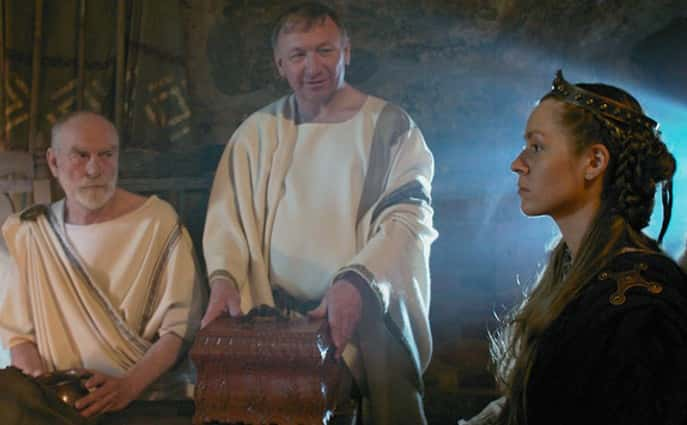 ageod-forum
ageod-forum
104. Blue-Man Group
Historians described Celtic warriors as being tall and muscular, and at least a head above their Roman enemies. This alone would have made them seem rather intimidating, but they also loved grandstanding, and would often coat themselves with a blue pigment to appear even more frightening. The showboating didn’t stop the Romans, but you’ve got to give them points for style!
105. Boudicca’s Last Stand
The exact site of Boudicca’s final battle—The Battle of Watling Street—is mostly based on speculation, but if the legends are true, her final stand was at Battle Bridge Road in Kings Cross, London. As with much of the story surrounding Boudicca, there’s little proof to this effect, but the discovery of Roman remains and its proximity to the Roman settlement of Londinium make a pretty good case that this is where she ended up.
106. Seriously Outnumbered
After her victory at Camulodunum, Boudicca went on to destroy the cities of Londinium (London) and Verulamium (St. Albans) in decisive fashion. Neither of the cities had enough people for their defense, making it easy for Boudica's force to achieve victory. In total, they caused the demise of around 80,000 Roman combatants and civilians in the three confrontations.
107. Sending a Message
In his accounting of the battle of Londinium, Dio describes a brutal scene that would have definitely raised a few eyebrows. Boudicca is said to have strung up the Roman noblewomen like animals, cut off their chests and stitched them to their mouths. When they were done with this crude scene, she supposedly skewered them like meat on a stick.
108. Them’s Fighting Words!
Before leading her warriors to battle, Boudicca reportedly gave a rousing speech worthy of Braveheart. She said: “I’m not fighting for my kingdom and wealth. I am fighting as an ordinary person for my lost freedom... Consider how many of you are fighting—and why. Then you will win this battle, or perish. That is what I, a woman, plan to do! Let the men live in slavery if they will."
109. Invoking the Goddess
Hunting hares was strongly discouraged in ancient Britain, as they believed that the hunter might become timid in doing so. Boudicca was said to have invoked the spirit of Andraste by releasing a hare from the folds of her skirt before battle. She might have wished for the Romans to eliminate the hare and suffer a surge of cowardice, but regrettably for the Celts, their desired outcome was not achieved, resulting in their defeat.
110. Check!
One of Boudicca’s strategies for battle was to take what she presumed would be abandoned Roman food stores for supplies, but the Roman general Suetonius anticipated her move and burned them all first, leaving her army to starve.
111. Fresh Tactics
Suetonius did not like losing to what he perceived to be “barbarian rebels,” and especially not to a woman. With the Romans seriously outnumbered, it might seem like the Brits were assured victory, but other than numbers, the Romans had all the advantages. They were better trained, more experienced, and had superior armaments. By the end of the day, at least 80,000 rebels had fallen to the might of the Roman swords.
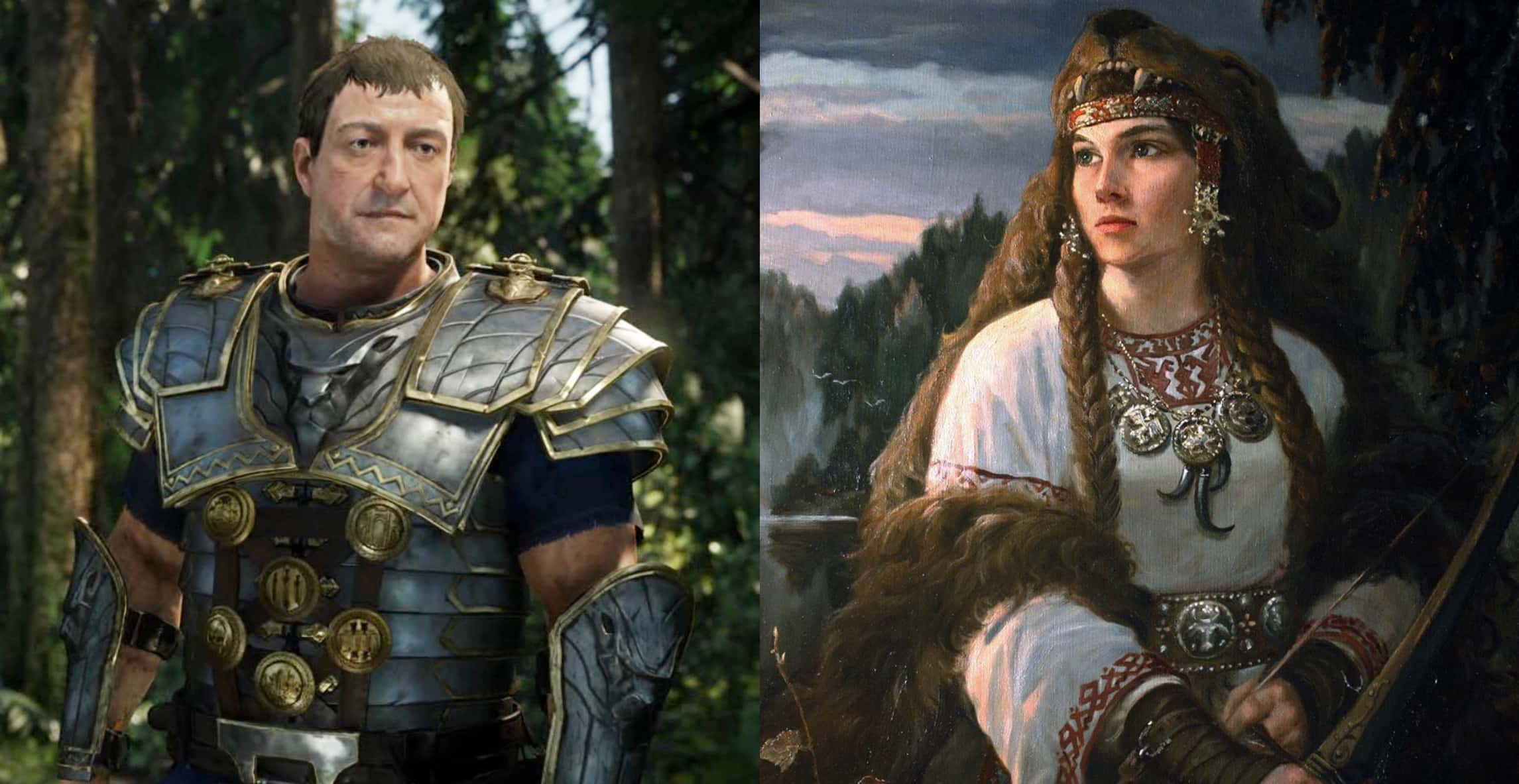
112. Hindered Not Helped
It was a Celtic tradition for warriors to take their families along during their battles, but when Boudicca and her rebels carried out the same, it resulted in a catastrophic misstep—it concluded in an absolute boomerang effect on them. Instead of observing the striking defeat of their enemy, all the families' wagons hindered the exit for those in arms, and all unfortunatly lost their lives.
113. Where in Britain is Queen Boudicca?
If you believe the rumors, Queen Boudicca’s remains could be buried between platforms nine & ten at King’s Cross station in London (I wonder if Harry Potter saw her ghost?), or she might be underneath a McDonald's in Kings Norton, Birmingham. Either way, no trace of her has ever been found, and while Dio claims she had a lavish burial, that would have been highly unlikely if she perished in battle. The lack of details hasn’t stopped archaeologists from looking for her however, so maybe one day she’ll turn up.
114. Boudicca’s Destruction Horizon
One of the few pieces of evidence that Boudicca was more than a myth is an archaeological layer of burnt red clay beneath the city of Colchester known as Boudicca’s Destruction Horizon. The layer was also filled with burnt pottery and other artifacts from the period, further demonstrating just how thorough Boudicca was in her destruction.

